Retire In France
by the numbers
Michael Burk
Chapter 14 - Now, Travel Europe at Your Leisure
(Excerpts and photos)
HOME
Day Trips
By car it's only six hours to drive from central France to any city in l'Hexagone, or its borders with any of eleven other countries. Consider taking auto or train trips and en-joying mini-vacations; you may even want to spend a few nights or weeks in these towns.
To track your travels automatically, remember to enable Google location settings on your smart phone before any trip.
NORMANDY
Étretat. A 200 km drive from Paris and an hour from Rouen via the A29 and A150 autoroutes, a famous feature of Étretat are its chalk cliffs. This hamlet on the English Channel has a population less than 2,000, known also for its three natural arches, la porte d'Amont, la porte d'Aval and la Manneporte, that inspired artists such as Courbet and Monet. Guy de Maupassant spent most of his childhood in Étretat and wrote short stories here. A tourist town, yes, but a splendid destination and you'll find plenty of dining choices. Restaurant descriptions at Trip Advisor
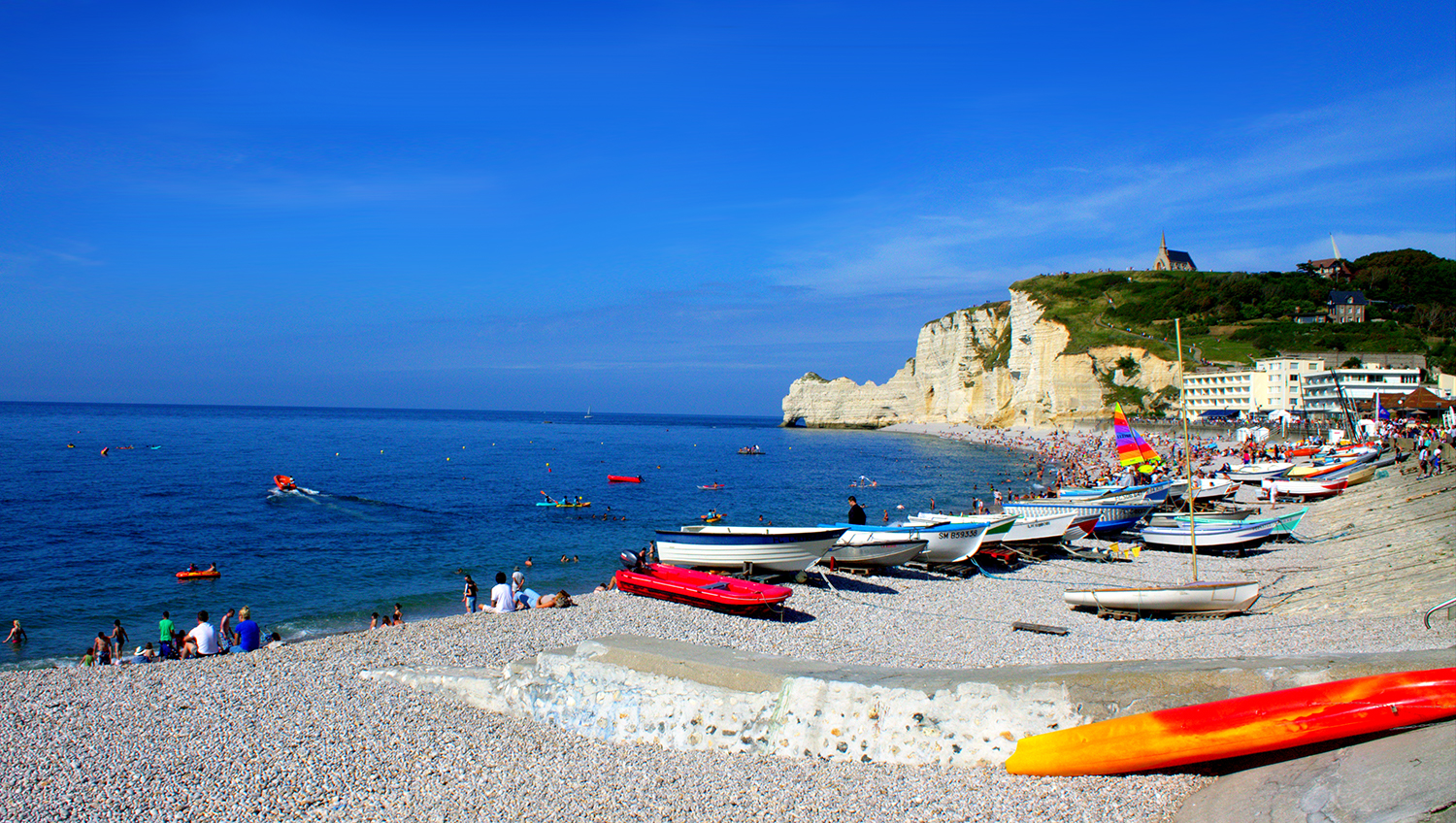
from toeuropeandbeyond.com

This photo of Etretat is courtesy of Tripadvisor
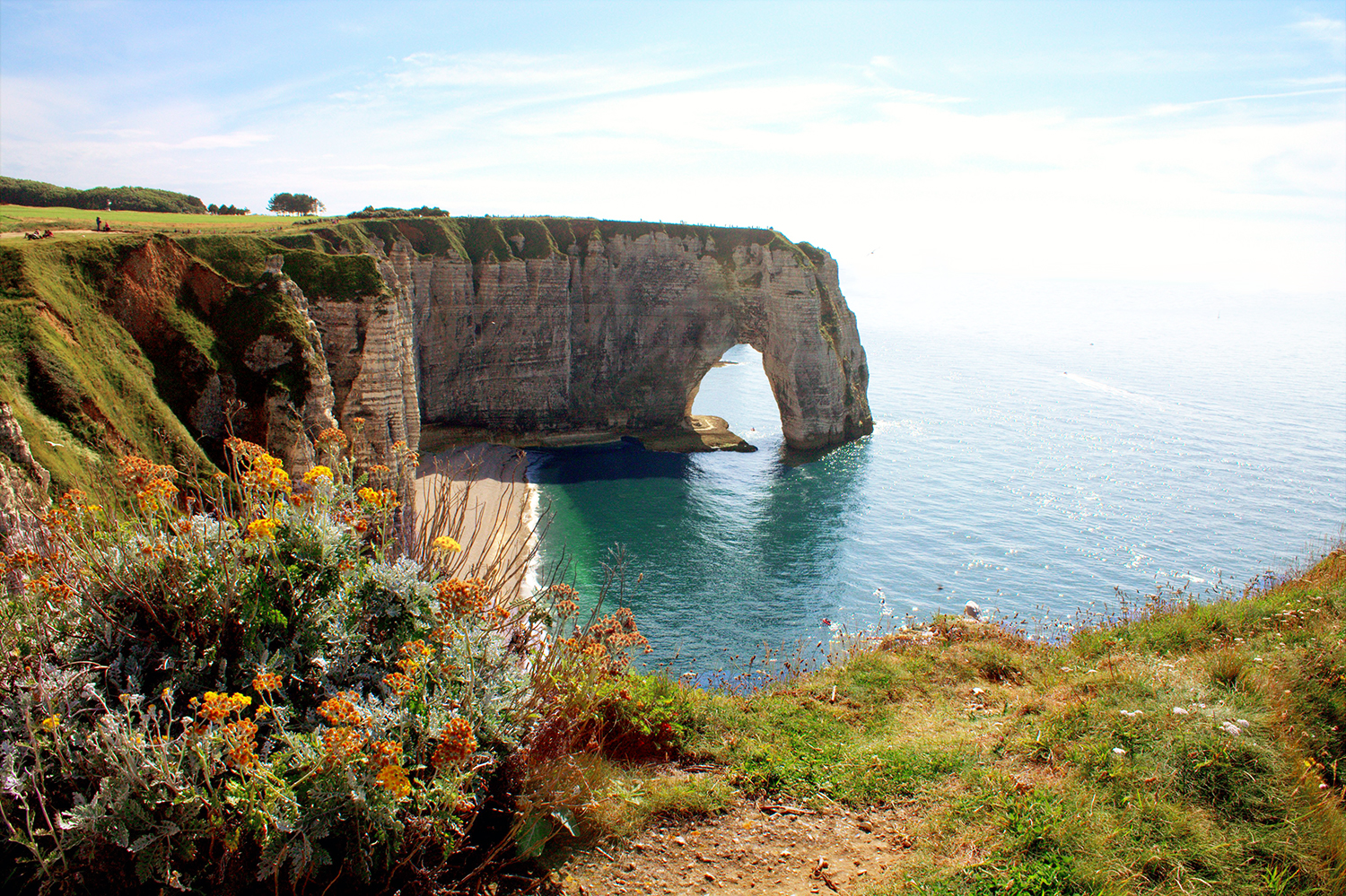
From toeuropeandbeyond.com
Saint-Céneri-Le-Gerei Slightly more than a hundred people live in this exquisite town on the outskirts of Alençon in the Alpes Mancelles hills, a charming village officially listed among the "most beautiful villages in France" (Les Plus Beaux Villages de France). This town on Normandy's quiet southern border was loved by artists such as Corot and Courbet. Visit the 11th-century Romanesque church perched above the river with its beautiful frescoes. Dining suggestions: L'Auberge de la Vallée, and L'échoppe Gourmande.

Source: https://en.normandie-tourisme.fr/unmissable-sites/the-most-beautiful-villages-of-france-in-normandy/saint-ceneri-le-gerei/
BRITTANY
Dinan. Time stands still here, in a town that is in itself a museum, sometimes described as a "fairy tale village." Dinan is lined with medieval buildings, cobblestone streets and quaint homes decorated with flower boxes. Come on a Thursday and encounter the bustling market at the town square, Place du Guesclin. From La Tour Sainte-Catherine you'll enjoy a stunning view of the River Rance.
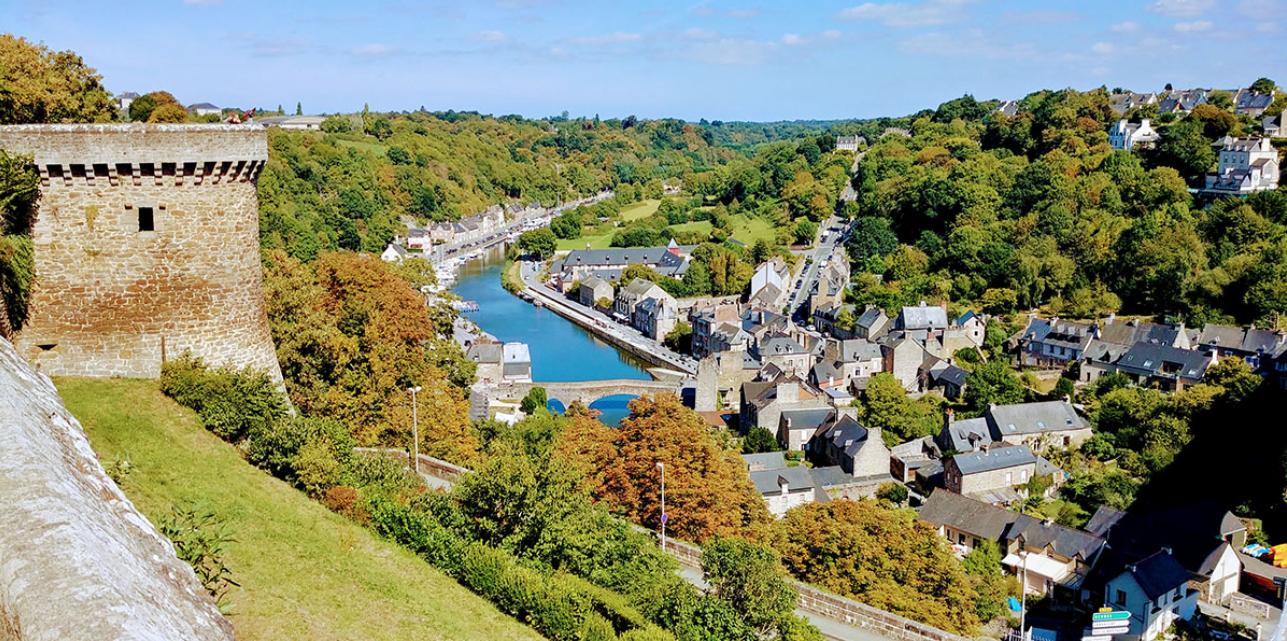
View of the Port of Dinan and the Rance river By Vestemocoso - Own work, CC BY-SA 4.0, commons.wikimedia.org--w--index.php QUESTIONMARK curid=81794646
Rochefort-en-Terre. 100 km northwest of the SNCF station at Nantes, Rochefort-en-Terre has been called one of the most beautiful villages in France. Many of its buildings date to the 16th century; the Catholic Church L'église Notre-Dame-de-la-Tronchaye is even more ancient, having a fortified tower dating from 1125 still standing. Every August the village hosts a festival honoring Notre Dame de la Tronchaye, a Black Virgin.
Visit the Naia Museum le Musée des Arts de l'Imaginaire, dedicated to fantastic and visionary art. Its name refers to Naïa la sorcière, a woman who lived in the ruins of the castle at the beginning of the 20th century; the people believed Naïa was able to summon a demon named Gnâmi to help predict the future. Restaurants in town, from Trip Advisor
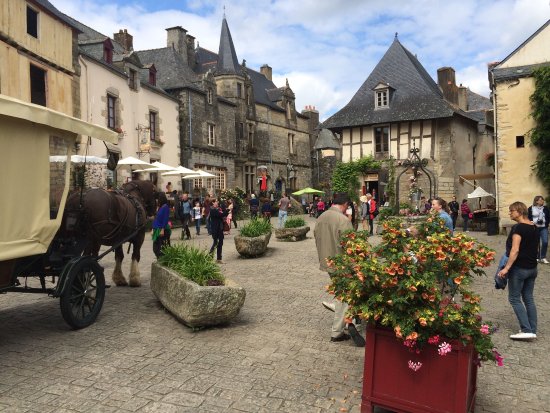
Source: tripadvisor
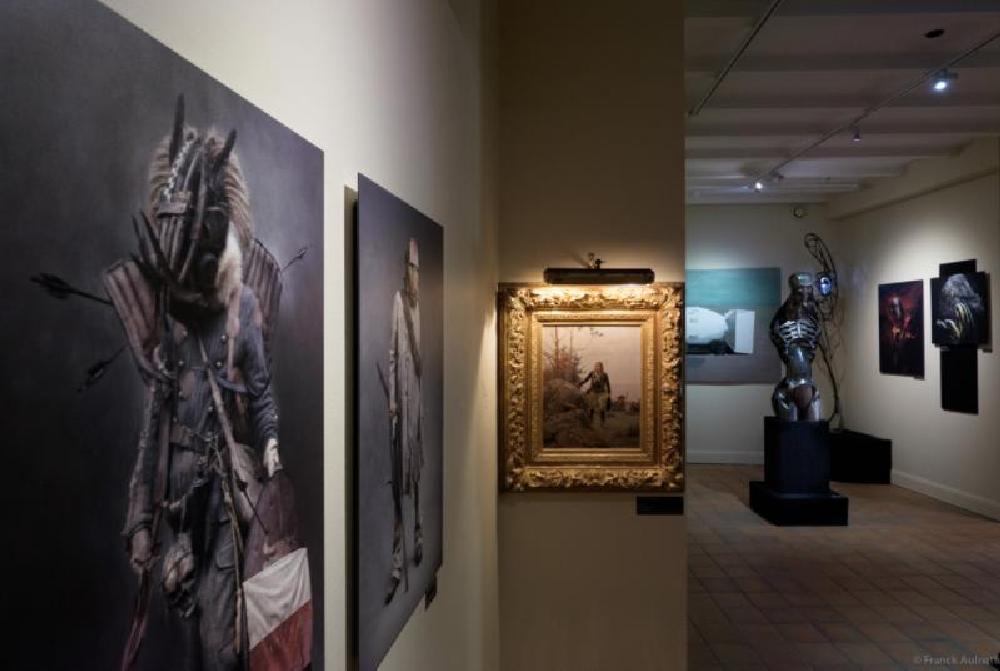
Source: guidedutourisme.net
BURGUNDY, ALSACE, GRAND EST
Travels through the north-east of France can bring you to many charming towns including the following:
Colmar. Located near Switzerland on the border of France and Germany, Colmar dates back to the 14th century. The capital of the Alsace wine region, it has been called "the prettiest town in France" with its brightly colored houses strug along small canals. Stroll around Colmar Old Town, Place de la Cathédrale and "Petite Venise." You can visit the Unterlinden Museum, Bartholdi Museum, and Eglise Saint-Martin, a fantastic Roman Catholic church with its 15th-century stained glass and carved wood details.
Restaurants, from the Michelin Guide.
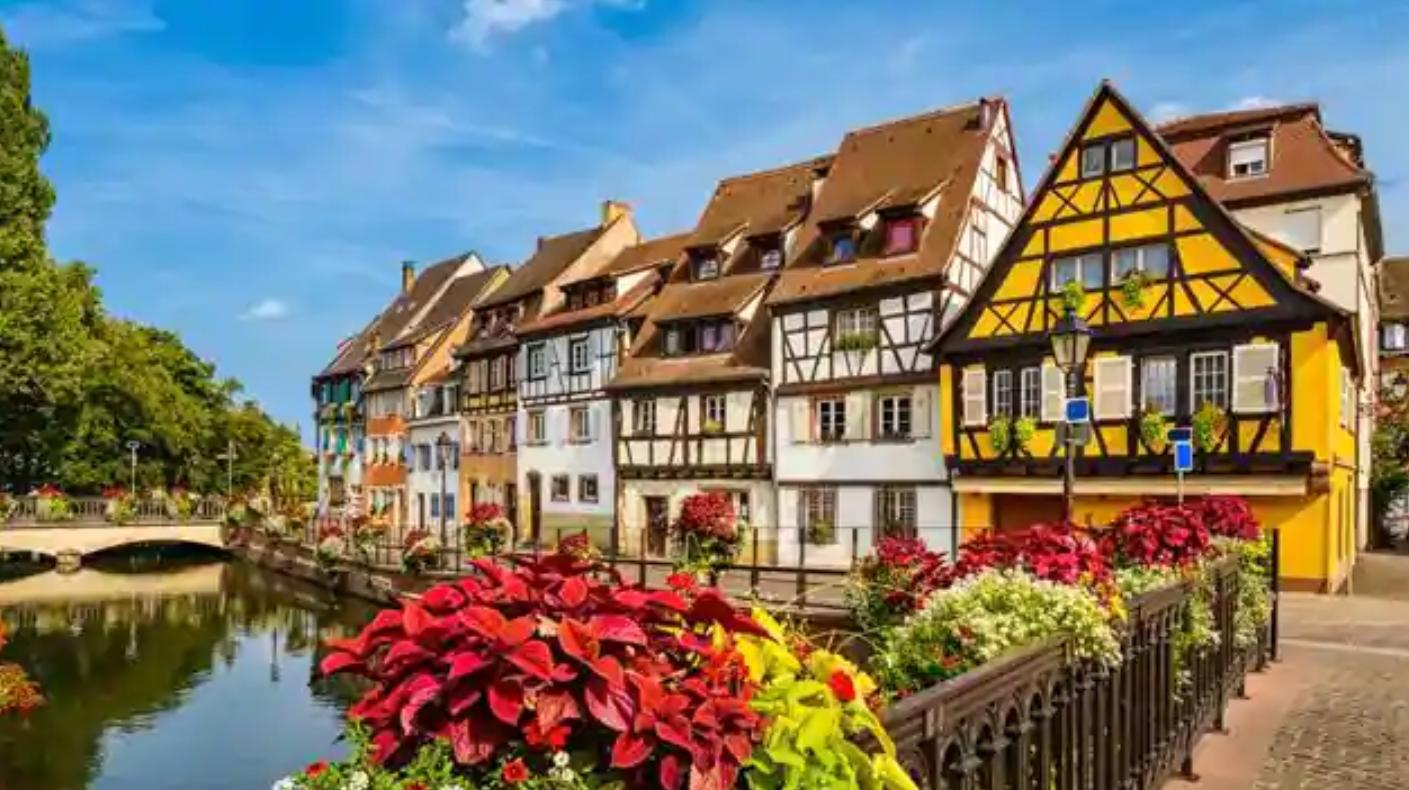
Source: hindustantimes.com
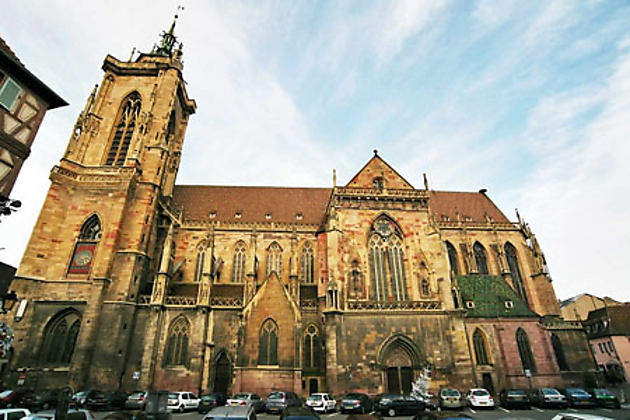
Source: routard.com
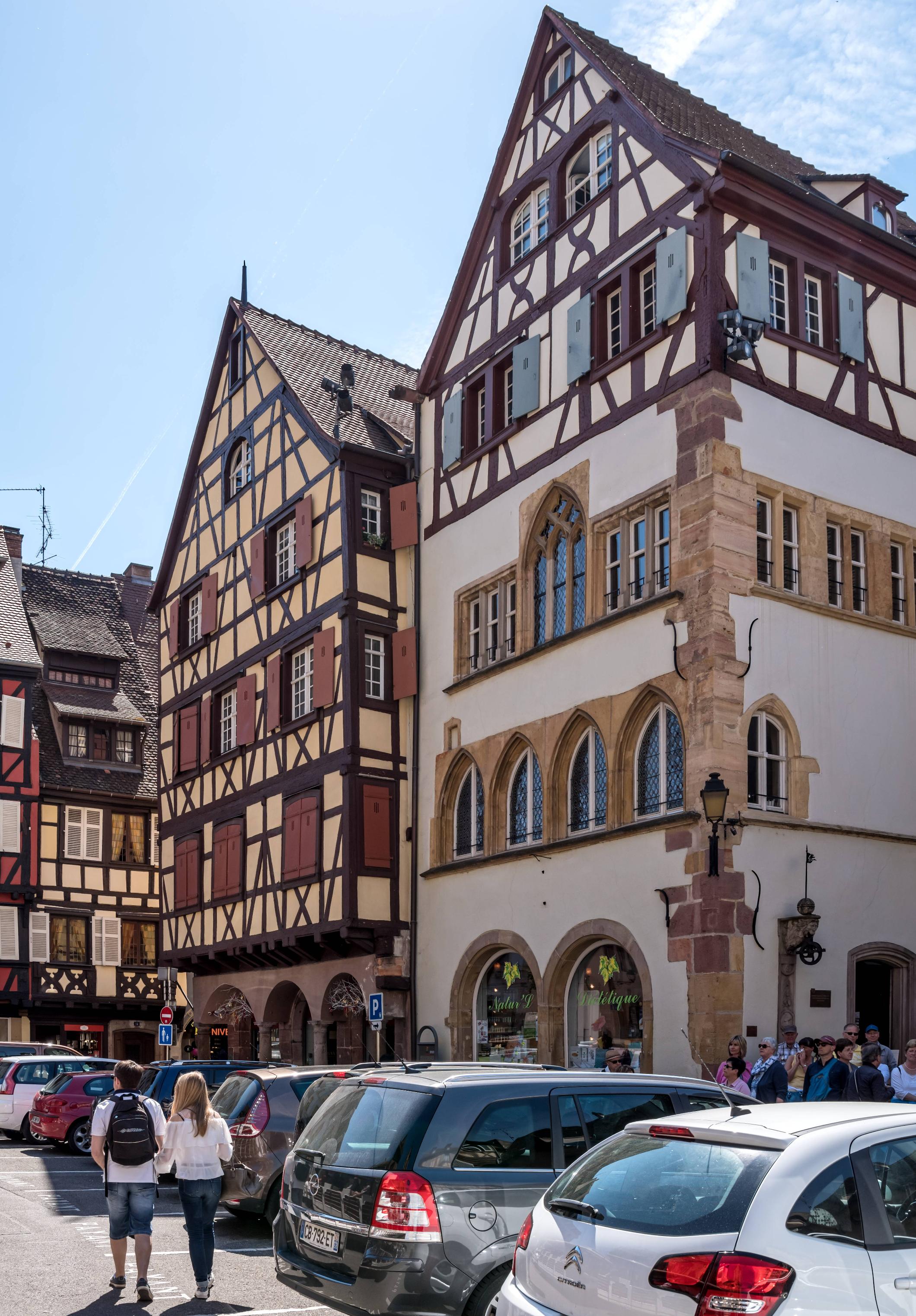
Source: Jörgens.Mi/Wikipedia, Licence: CC-BY-SA 3.0, Source: Wikimedia Commons
Eguisheim. A short drive of eleven km southwest of Colmar will bring you to the medieval village of Eguisheim, which ranks in the top 20 Les Plus Beaux Villages de France. It's a small and delightful village; you might spend one or two hours here, plus a stretch while you grab a bite at one of its restaurants. Consider visiting in late December when many activities are offered around the Christmas market. Dining, from Trip Advisor
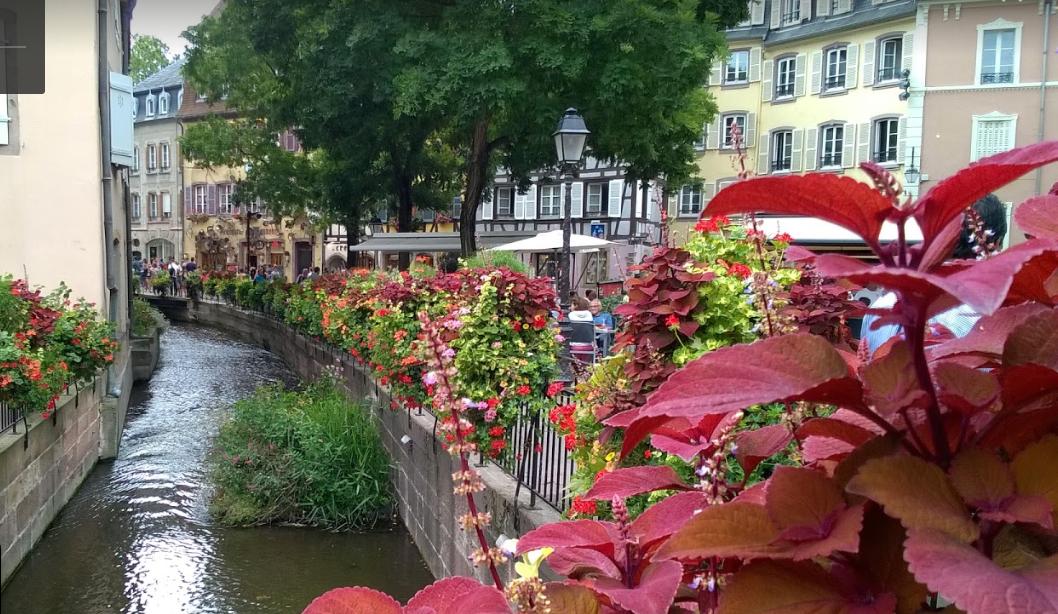
Source: Google Images
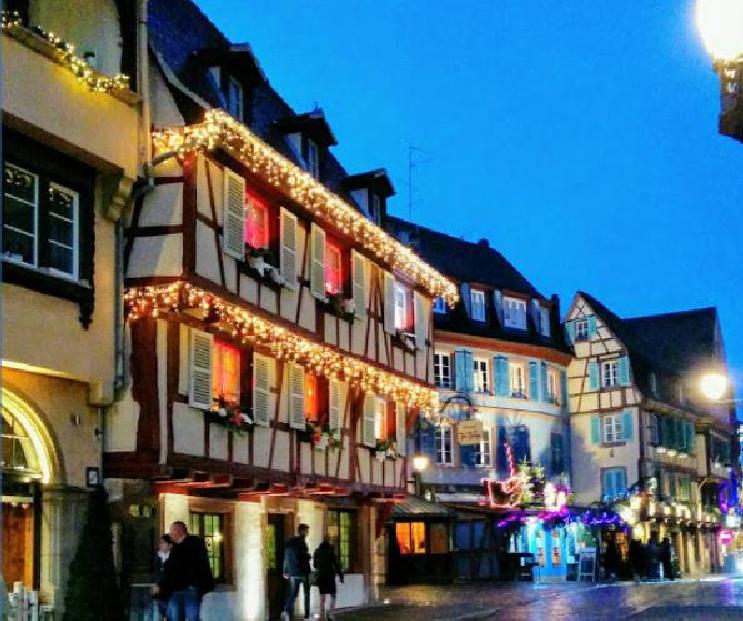
Source: Google Images
Riquewihr. Twenty minutes from Colmar via the D10 autoroute, Riquewihr is home to some 1,500 people and known for its historic architecture and great Rieslings and other wines. Medieval fortifications surround the village and it offers several museums to visitors. With plenty of dining options, Riquewihr is another of Les Plus Beaux Villages de France. Take a five minute drive north to experience an indoor live butterfly garden (Jardins des Papillons) in the town of Hunawihr (Route de Ribeauville); admission is 8€ for adults.
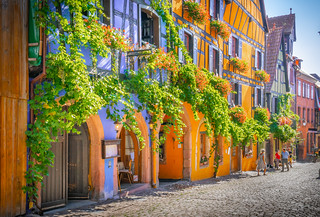
Source: staticflickr.com
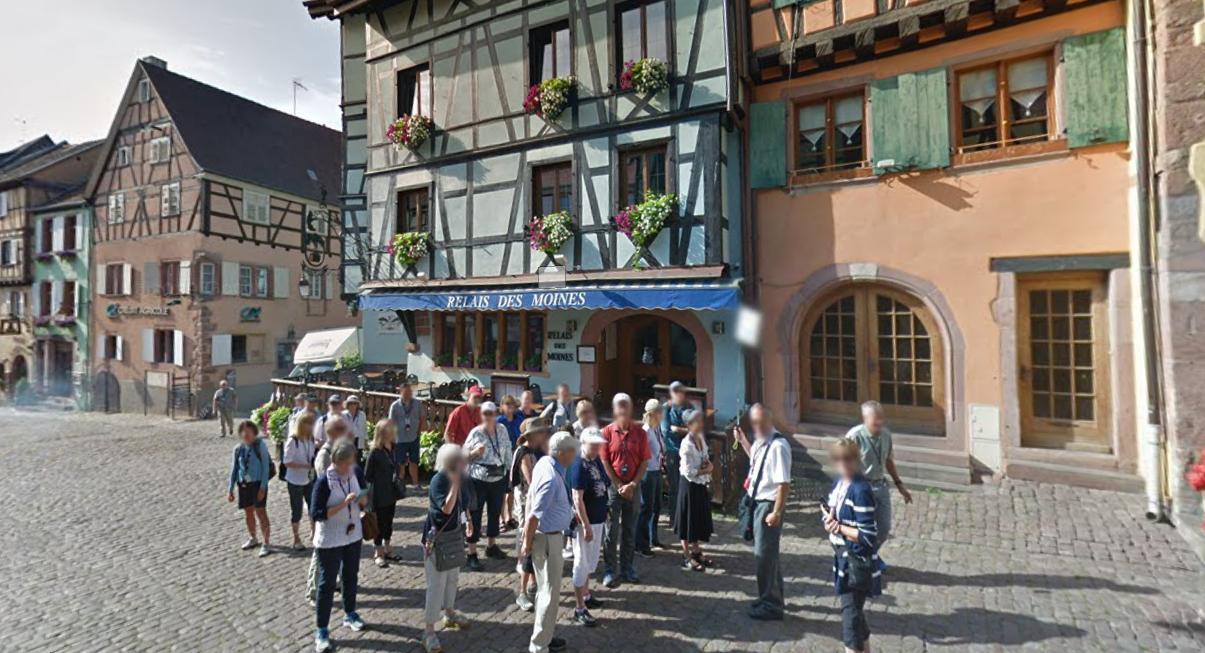
Source: Google Images
Jardins Des Papillons:
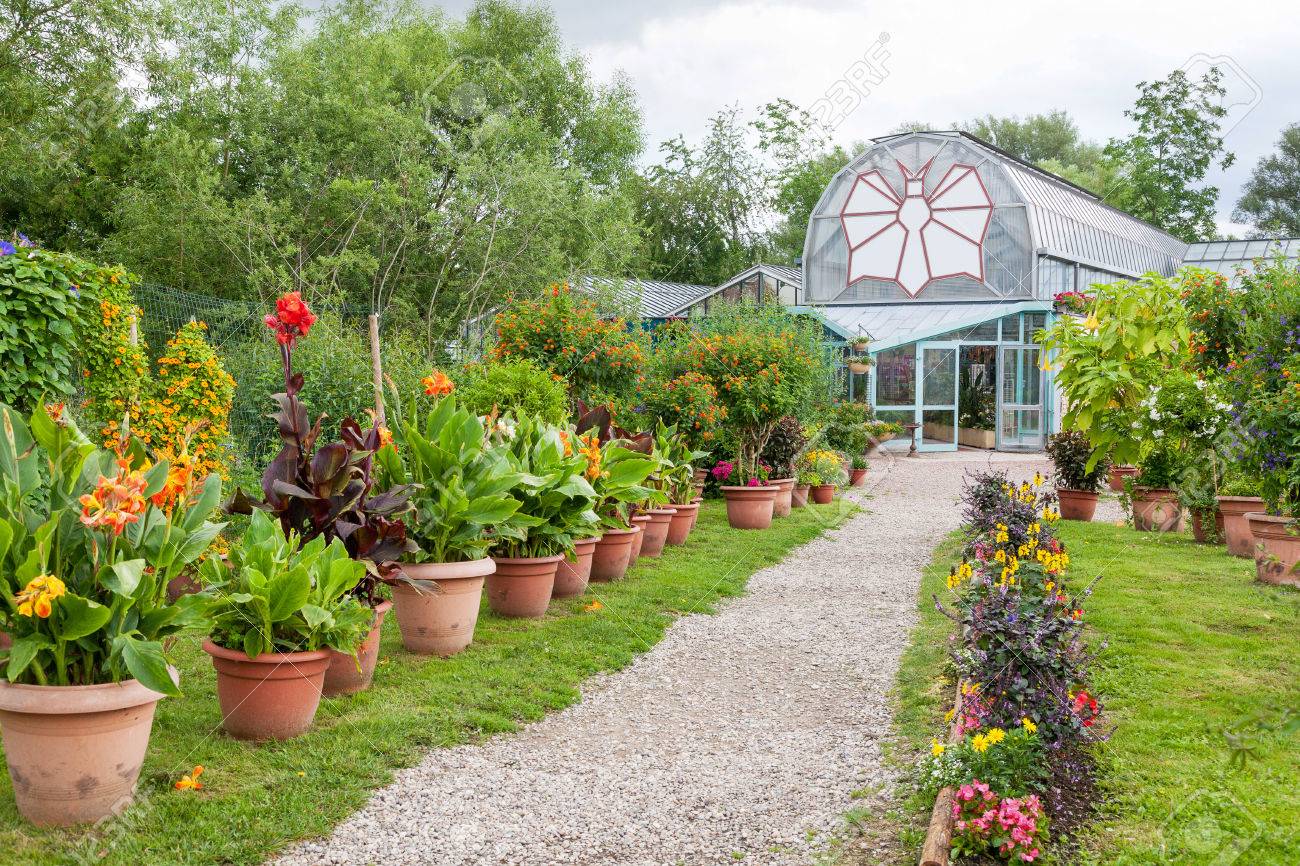
Source: 123rf.com
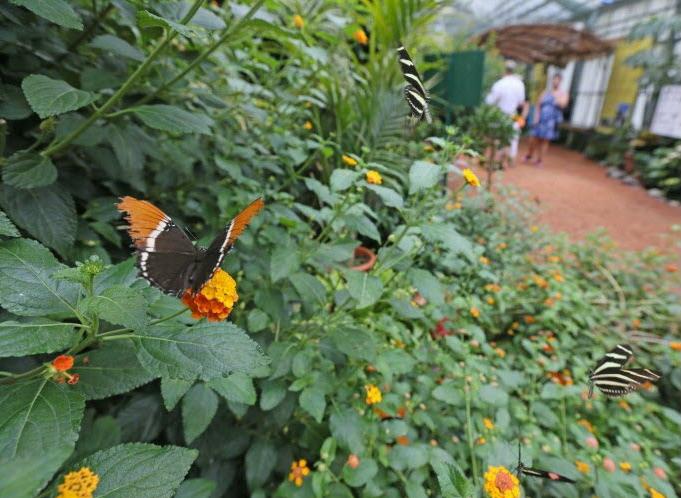
Source: vosgesmatin.fr

Source: tourisme-alsace
Strasbourg. With a population of almost 300,000, this is not one of the intimate and quiet little hamlets on these lists, but it's not loud and bustling either. You'll find a blend of French and German cultures with charming homes lining the streets, plenty of museums, and the Cathédrale de Notre Dame de Strasbourg, the tallest medieval building in Europe. Consider taking a tour by water on one of the canal boats.
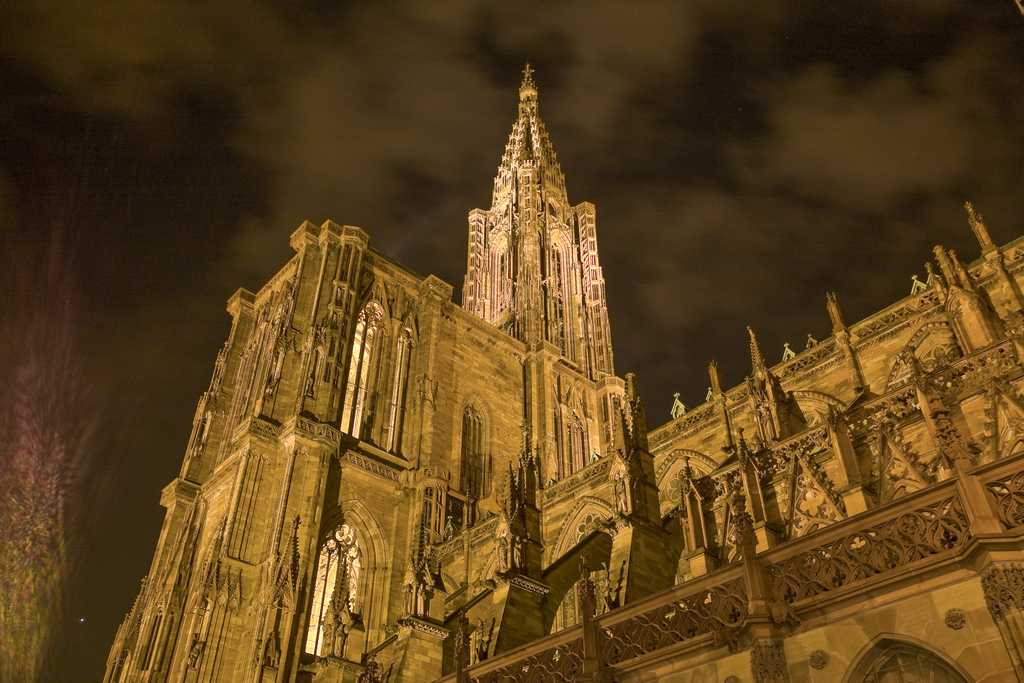
Source: www.visitstrasbourg.fr
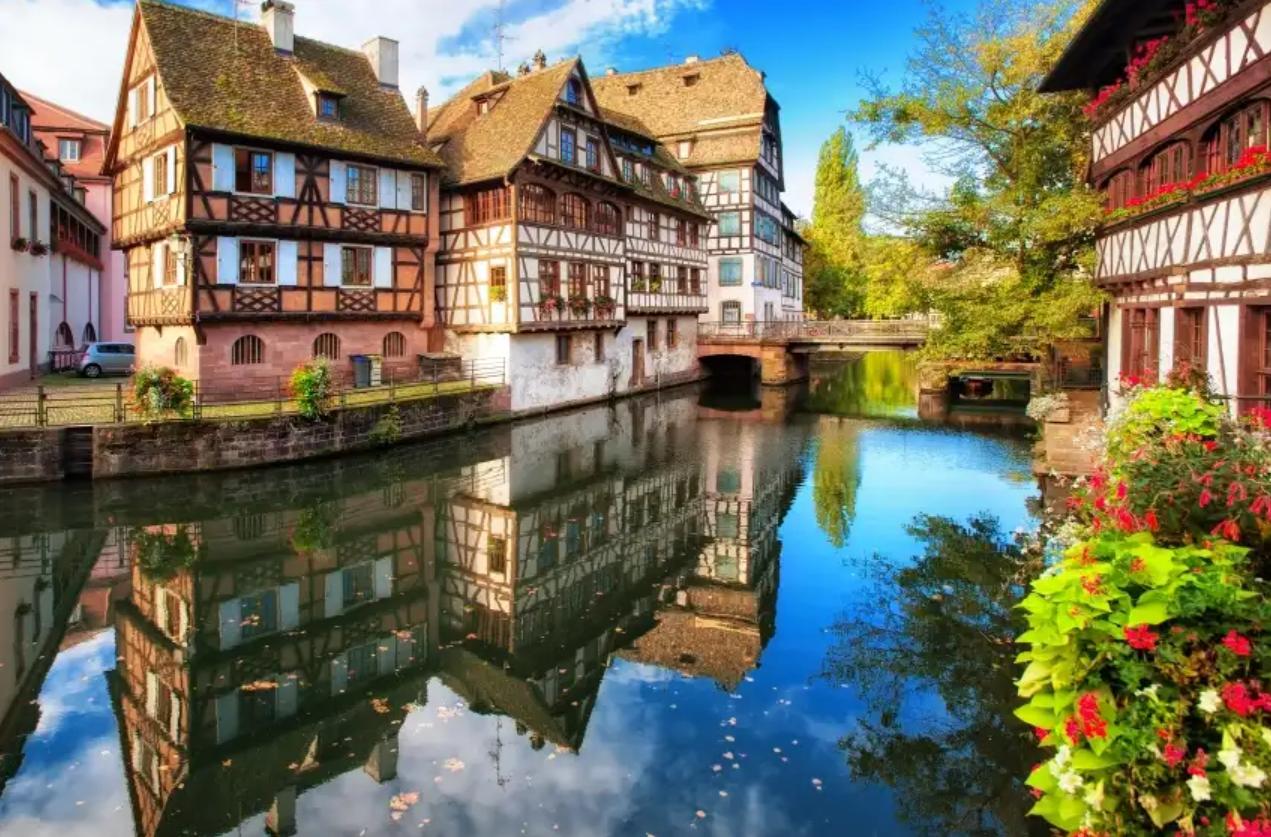
Source: croisieurope.com
:max_bytes(150000):strip_icc():format(webp)/strasbourg-and-her-beauty-916501254-ce71f410ac7c49038051063de7c12d86.jpg)
Source: tripsavvy.com
CÔTE D'AZUR
Èze. With ramparts and the ruins of a medieval castle, Èze lies some 12 km from Nice. Many arts and craft shops line its labyrinthine streets. Le chemin de Nietzsche (Nietzsche path) starts at seaside and snakes its way up a steep slope to the hilltop village. It is said that, toward the end of his life, Friedrich Nietzsche frequented the path and it inspired him to write the third part of Also Sprach Zarathustra. The dizzying view from the top of the village evokes a coup de coeur that is legendary. You'll have no problems finding places to dine here.
The view from the Jardin Exotique d'Èze at the top of Èze Village:
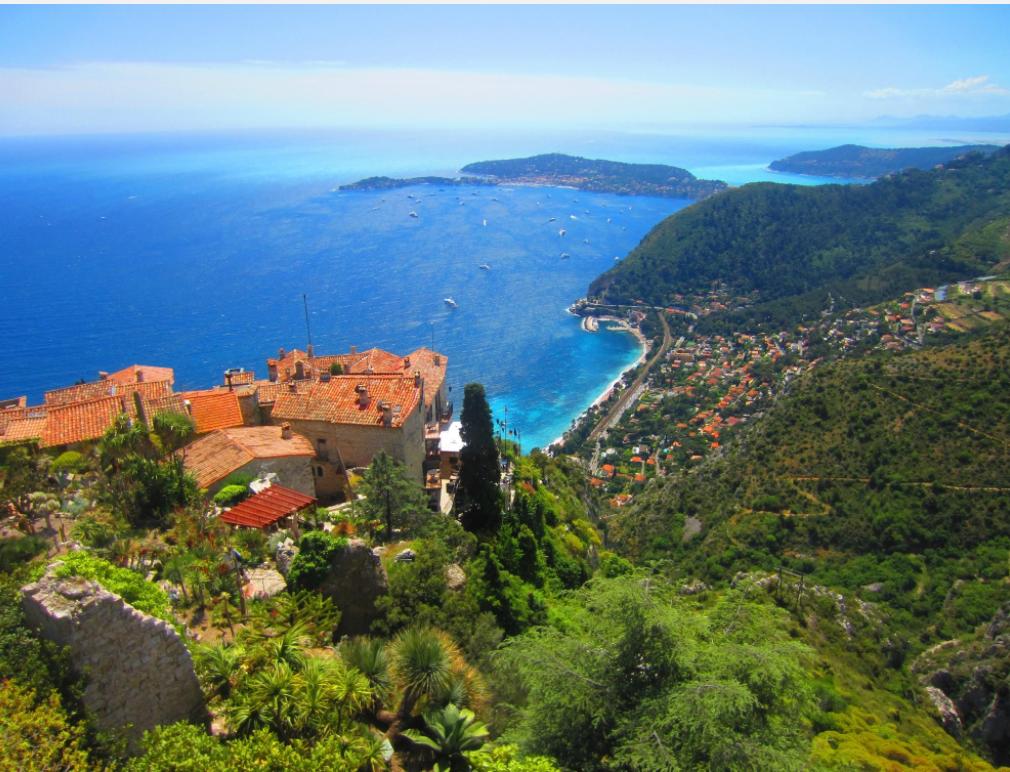
Source: Traveler photo submitted by Jenayyy (Jun 2013), tripadvisor.com
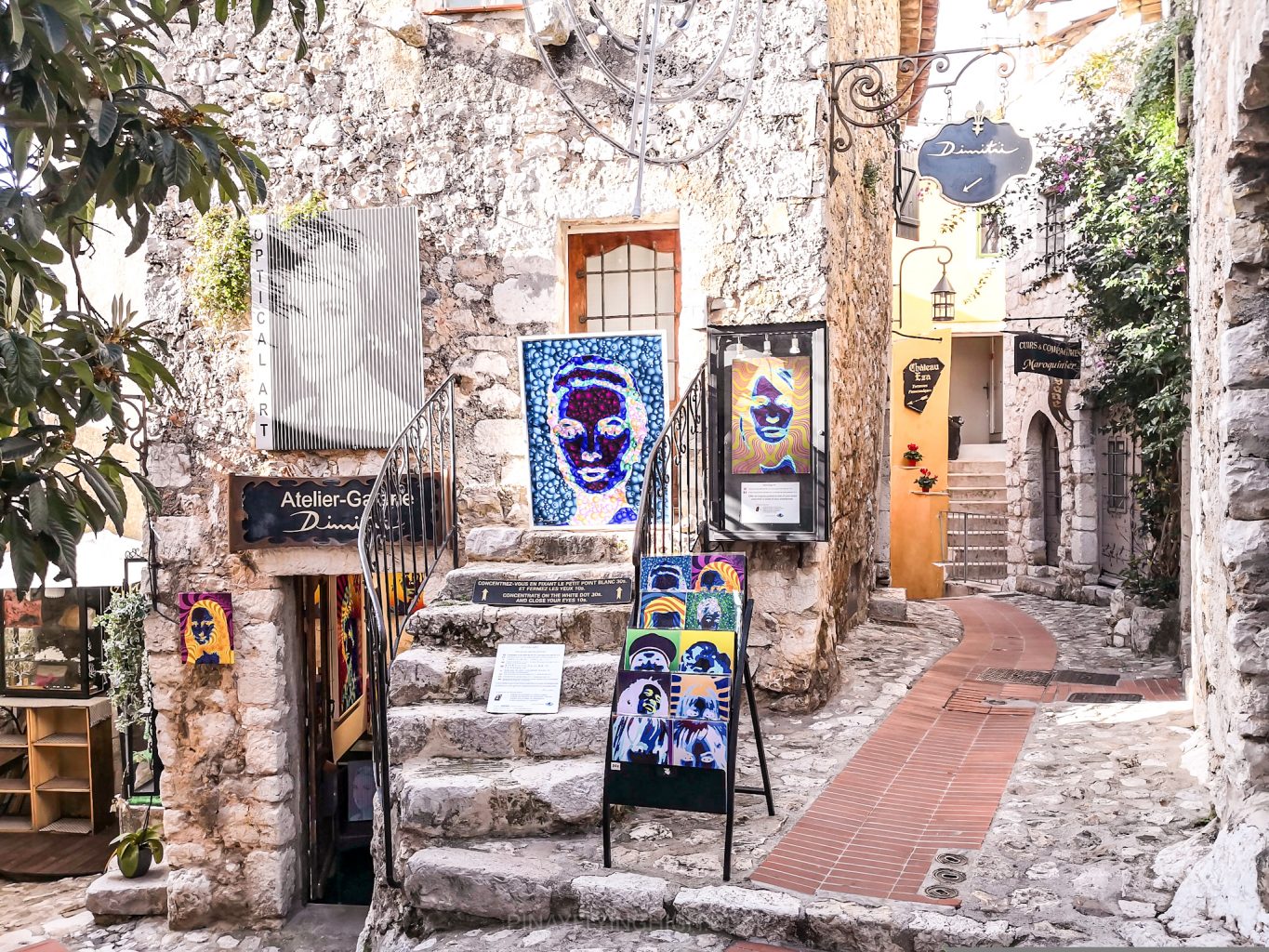
Source: Noemi. A blogger/travel industry professional, pinayflyinghigh.com
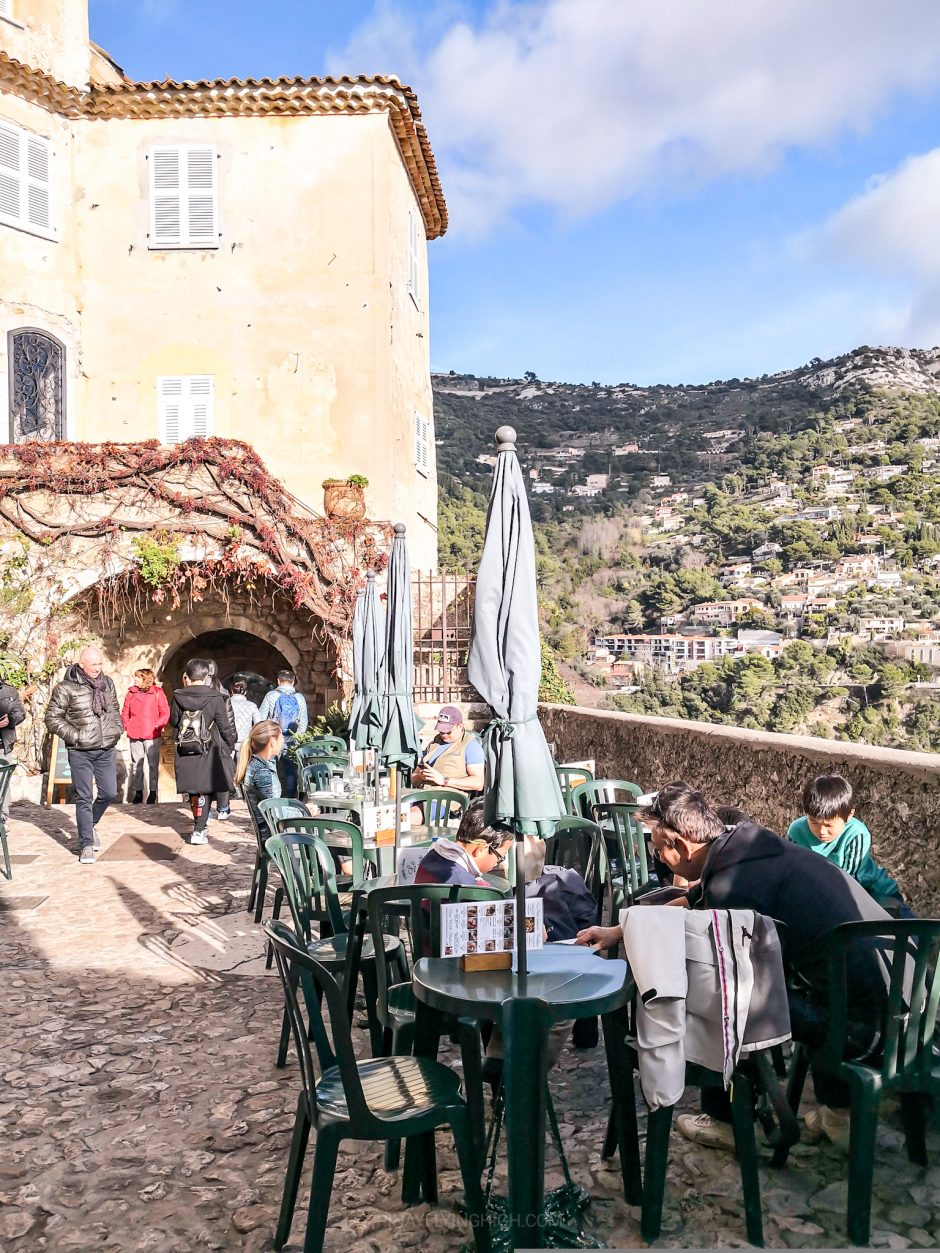
Source: Noemi, pinayflyinghigh.com
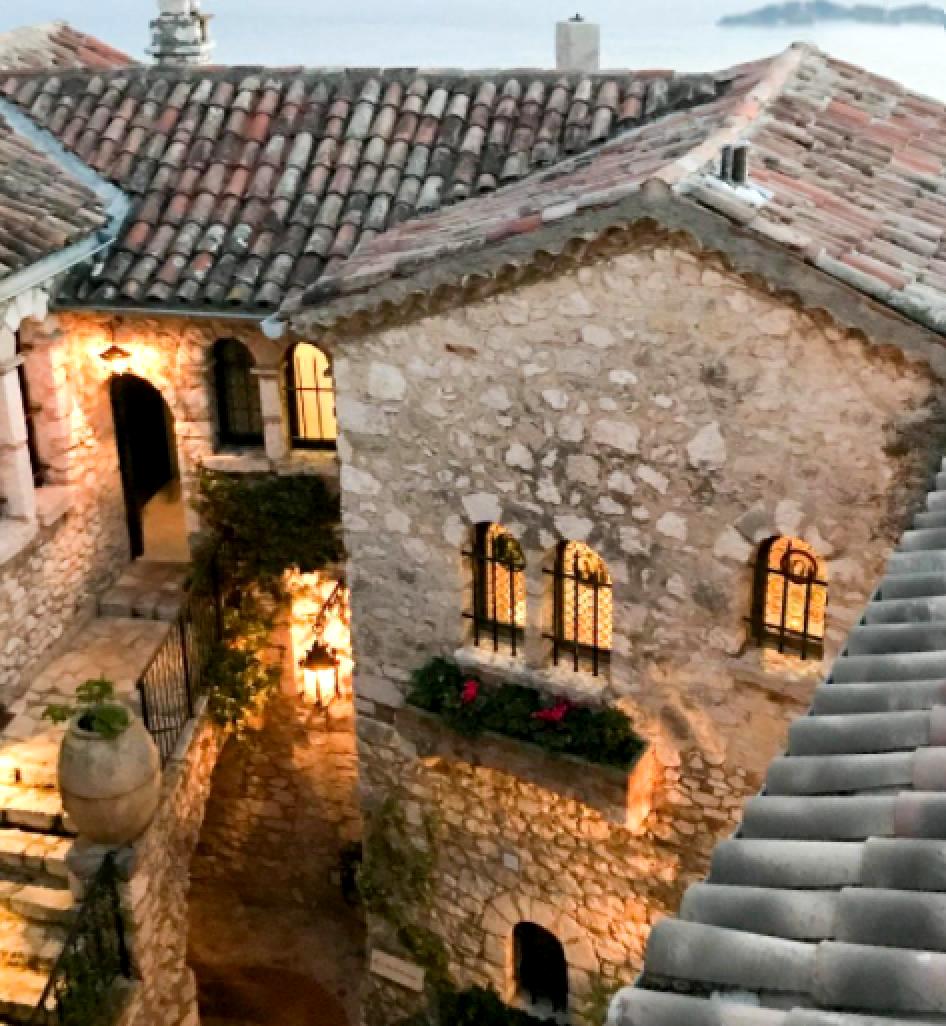
Source: Pinterest
At the foot of the Nietzsche path:
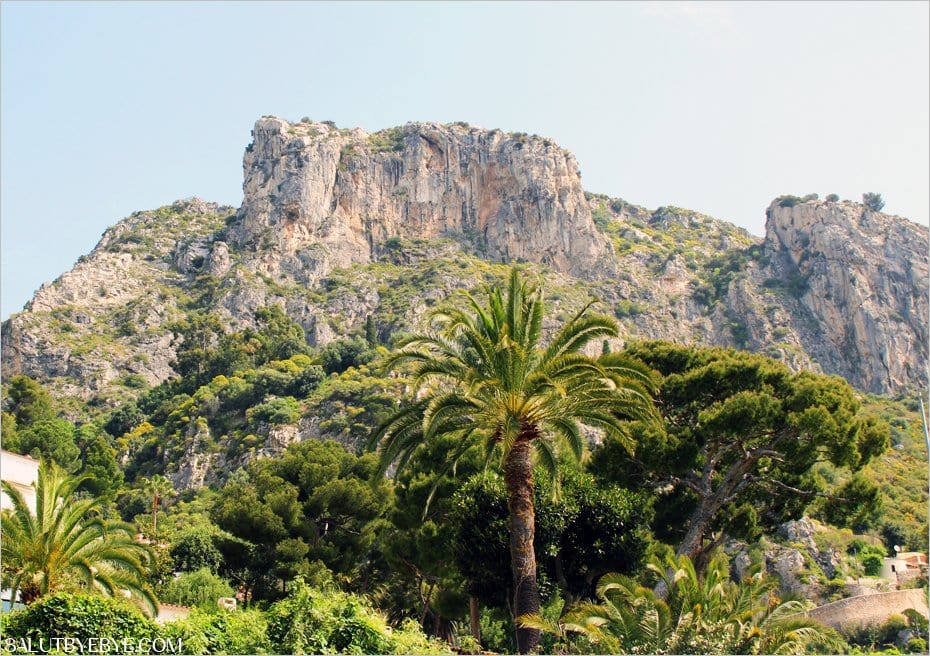
Source:salutbyebye.com
Gordes. This town with about 1,700 inhabitants is one of the most visited villages in the Luberon Regional Natural Park. It is located on the edge of the park in the Monts de Vaucluse, which faces the northern slope of the Luberon mountain. As you approach on the D15/D2, be sure to stop for a moment and enjoy the view of the town on the hill. Take some snapshots!
Gordes is one of Les Plus Beaux Villages de France with a castle, many old hamlets, two abbeys, mills, fountains and several hundred dry stone huts, or bories.

Source: kinstacdn.com

Source: Gordes panorama from French Wikipedia by JM Rosier
Villefranche-sur-Mer. This is a gorgeous waterfront town, one of my all-time favorites. In Old Town, most buildings date from the 12th and 13th centuries and you'll find Provençal designs, colors, flowers, and balconies. Wander the streets, shop, enjoy a relaxed lunch; there are plenty of cozy restaurants along the promenade and the marina. There's a large sandy beach, and you can discover small rocky shores that are also beautiful.
For a hike, try the the Sentier du Littoral (coastal path), a salty jaunt that winds along cliffs, creeks and sandy beaches all the way from Cap de Nice to Villefranche (beware, lots of ups and downs and steps, it's not an easy stroll).

Source: Villefranche-sur-Mer from Trip Advisor
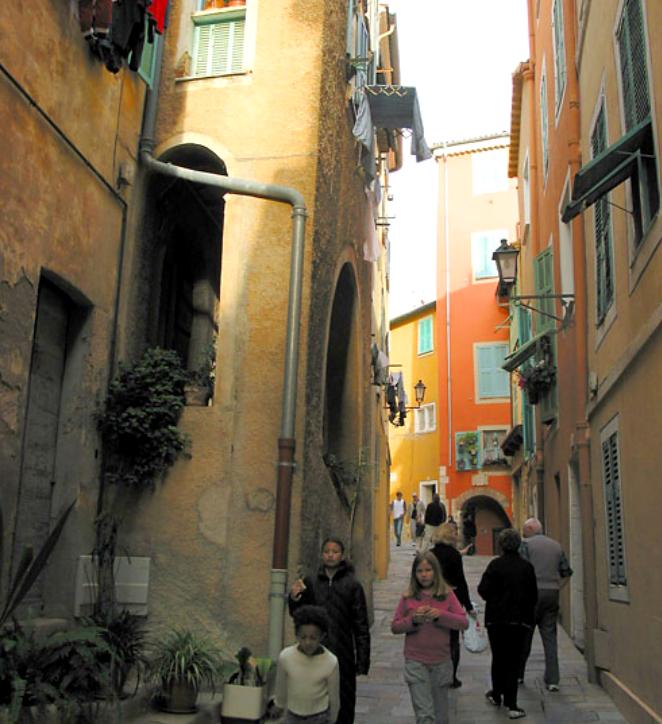
Source: Villefranche-sur-Mer from rivieraexperience.com
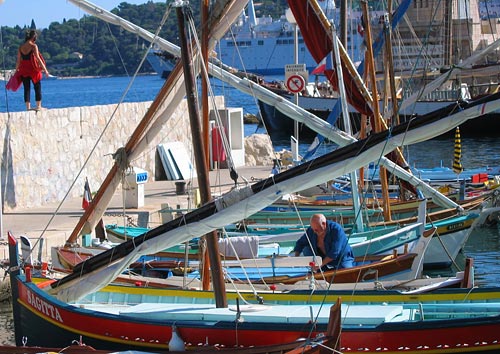
Source: Villefranche-sur-Mer from rivieraexperience.com
Moustiers-Sainte-Marie. Should we start abbreviating it? Moustiers is another of LPBVdF (Les Plus Beaux Villages de France). This picturesque village of less than 1,000 residents is framed by mountains and nestled in terraces against a rocky cliff. Walk around centre ville, there are plenty of shops and restaurants. If you're up for it, there's a rather steep climb to the chapel Notre Dame de Beauvoir which rewards you with a breathtaking view of the valley.
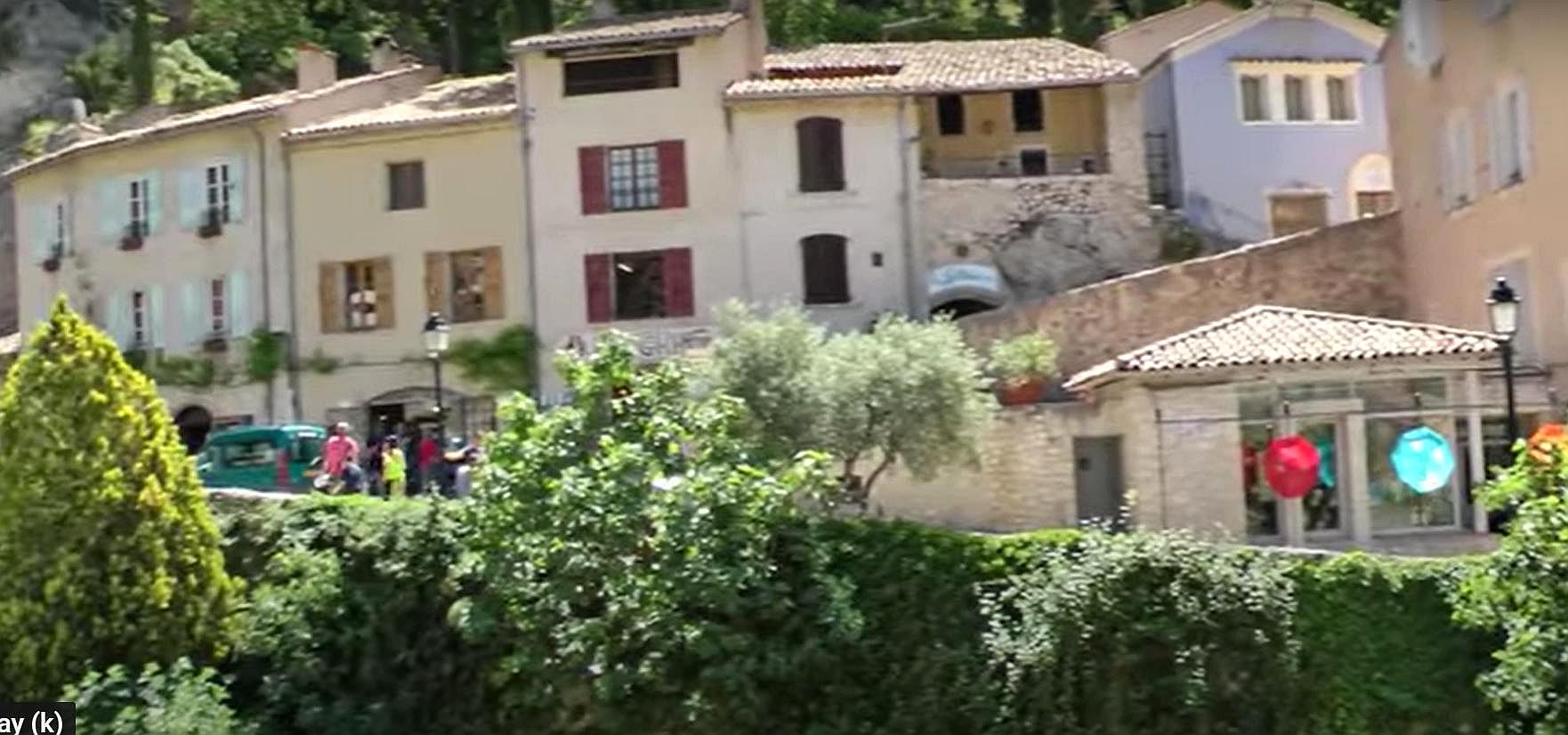
Source: YouTube channel "videoturysta"
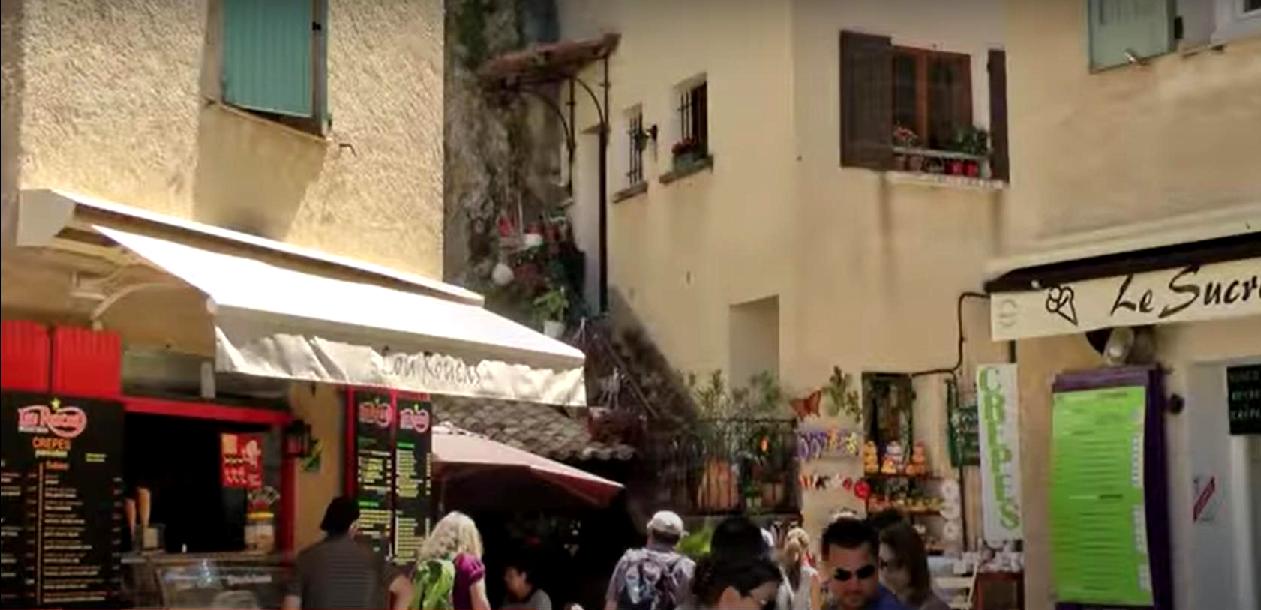
Source: YouTube channel "videoturysta"
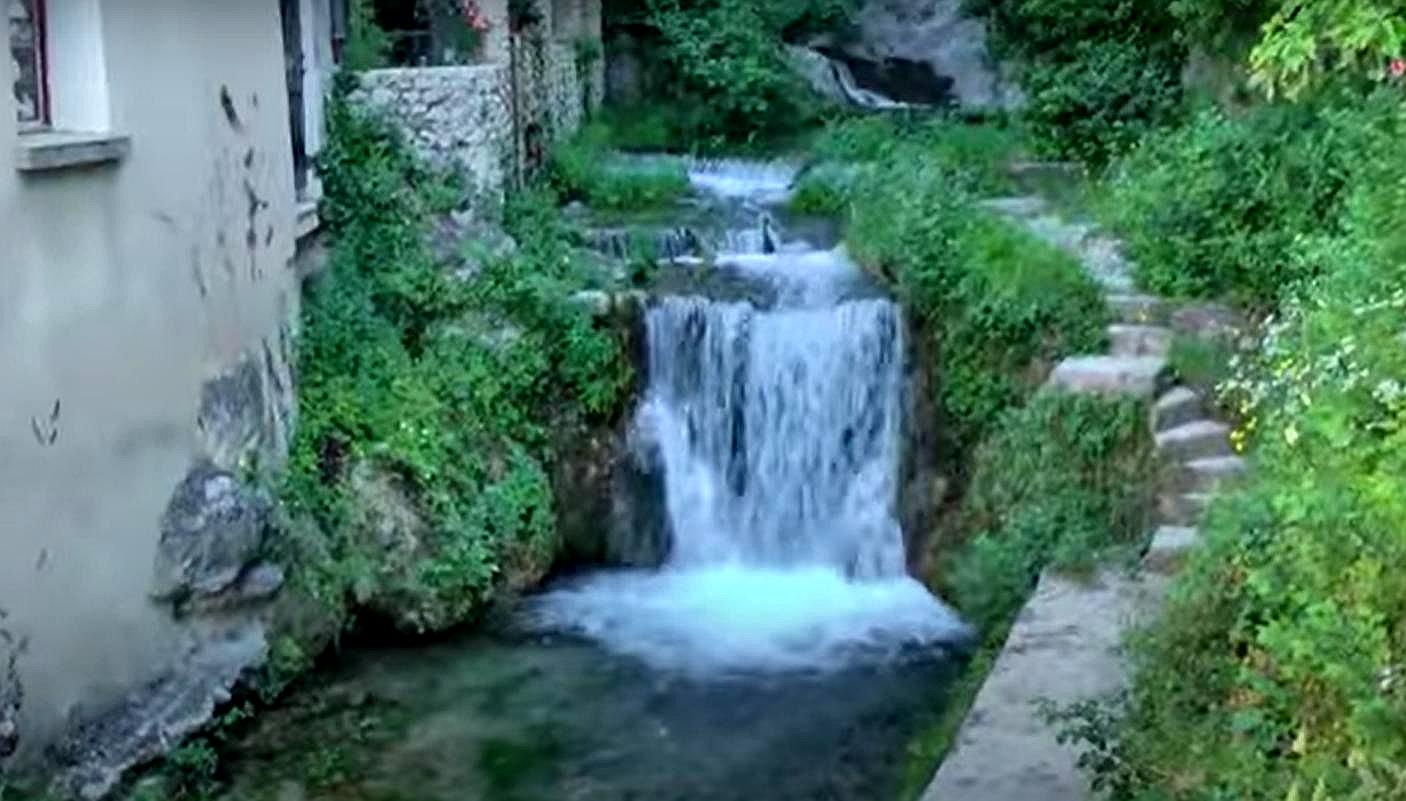
Source: YouTube channel "videoturysta"
ALPES-MARITIMES
North of the Riviera you'll find plenty of quixotic villages as you drive through the hills of Provence-Alpes-Côte d'Azur. Here are some lovely nooks:
Peillon. A half hour drive from Èze on the coast and a mere 20 minutes north of the airport at Nice, Peillon is perched on a cliff and is a bewitching pedestrian-only village. It's not loaded with shops, souvenir stands and restaurants like many tourist spots (but there are a few at the town entrance). You'll need a little stamina for some of its steep passageways, and the views are gorgeous.
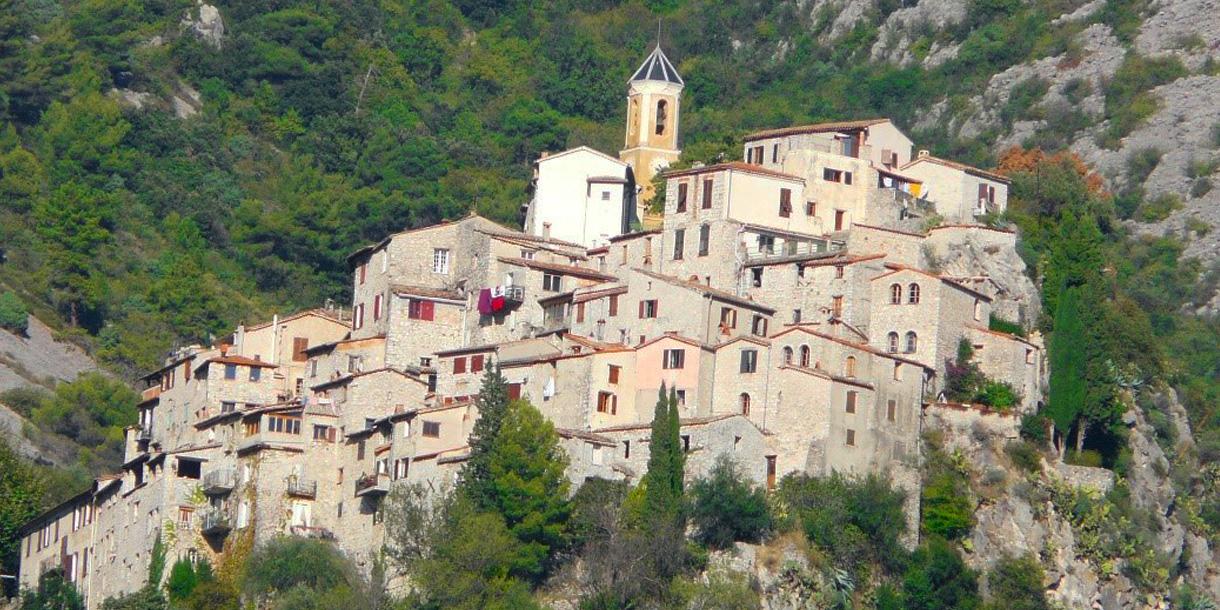
Peillon. Source: unique tours factory
Séguret. An hour and a half from the Mediterranean, this is another of LPBVdF, also being a wine-producing village of Cotes du Rhone for several centuries now (visit the Roaix-Séguret wine cellar or one of the vineyards). The tower of a medieval castle overlooks the town and offers a clear view over the lovely Vallée du Rhône. Everything is beautiful in Séguret; it is well maintained, and ancient structures have been patiently restored. Just don't come during the tourist season when it's overloaded with crowds.
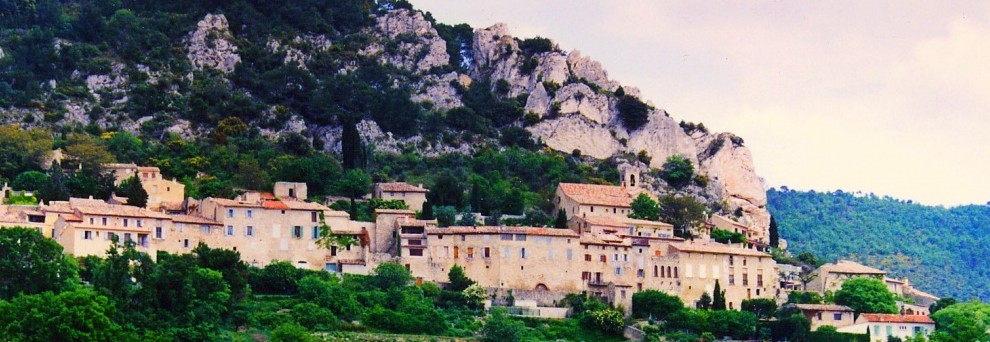
Source: sablethome.com
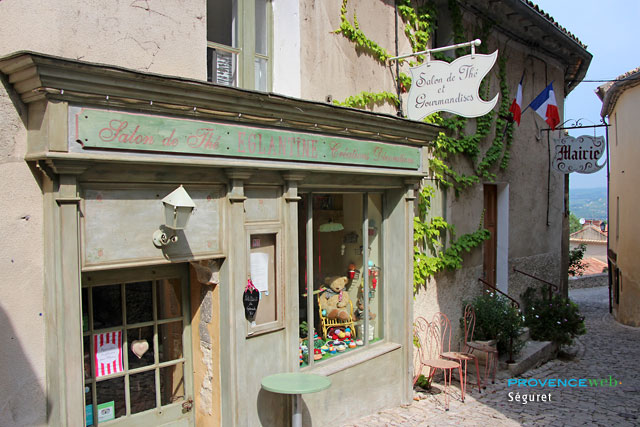
Source: planeteprovence.com
Mollans-sur-Ouvèze. In Auvergne-Rhône-Alpes halfway between Lyon and the beaches at Saint-Tropez, this village lies within a mountainous landscape and houses about 1000 residents. Mollans-sur-Ouvèze (not to be confused with Mollans in Haute-Saône) is full of olive trees, wild lavender, medieval streets and monuments. Starting in the lower village, you can stroll through the quiet streets and cross the bridge built in medieval times.
The Tour de l'Horloge (Clock Tower) is one of the three towers that once served as a defensive system, still standing. Be sure to see the fountain at the Dauphin, classified as a historical monument. Every Saturday morning there is a market; in July and August, a grand market takes place the last Saturday at 17:00, with local producers and artisans.
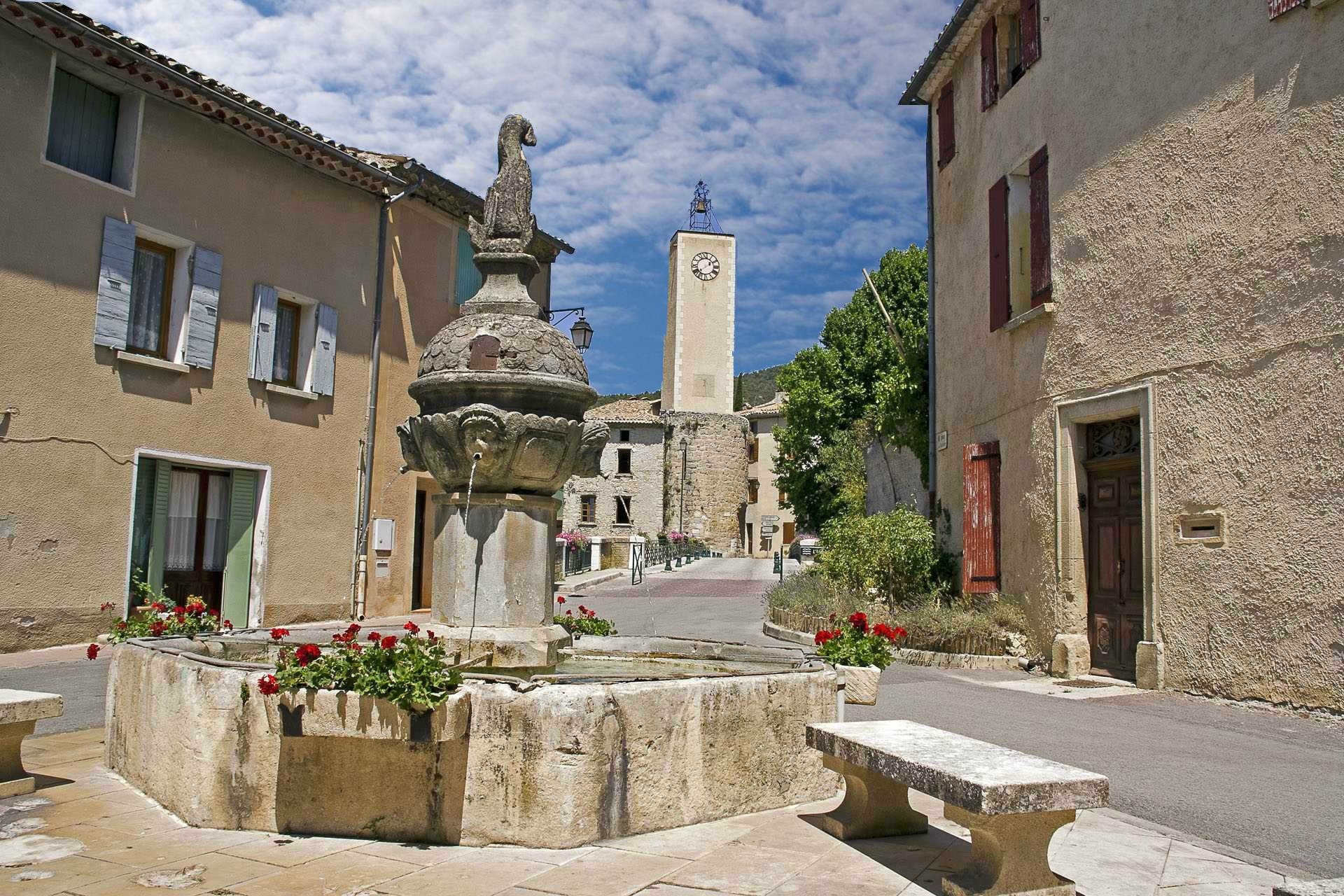
Source: canalblog.com
Roussillon. An hour and a half from the Mediterranean coast with a population of fewer than 1,500 souls, this commune is another LPBVdF and dates back to 600 BC. You should probably leave your vehicle in the Parking des Ocres lot and walk from there; keep your parking ticket on you so you can pay while returning. Wander through the small streets and enjoy colorful homes and lovely architectural details. For sustenance, you'll find no shortage of amiable restaurants.
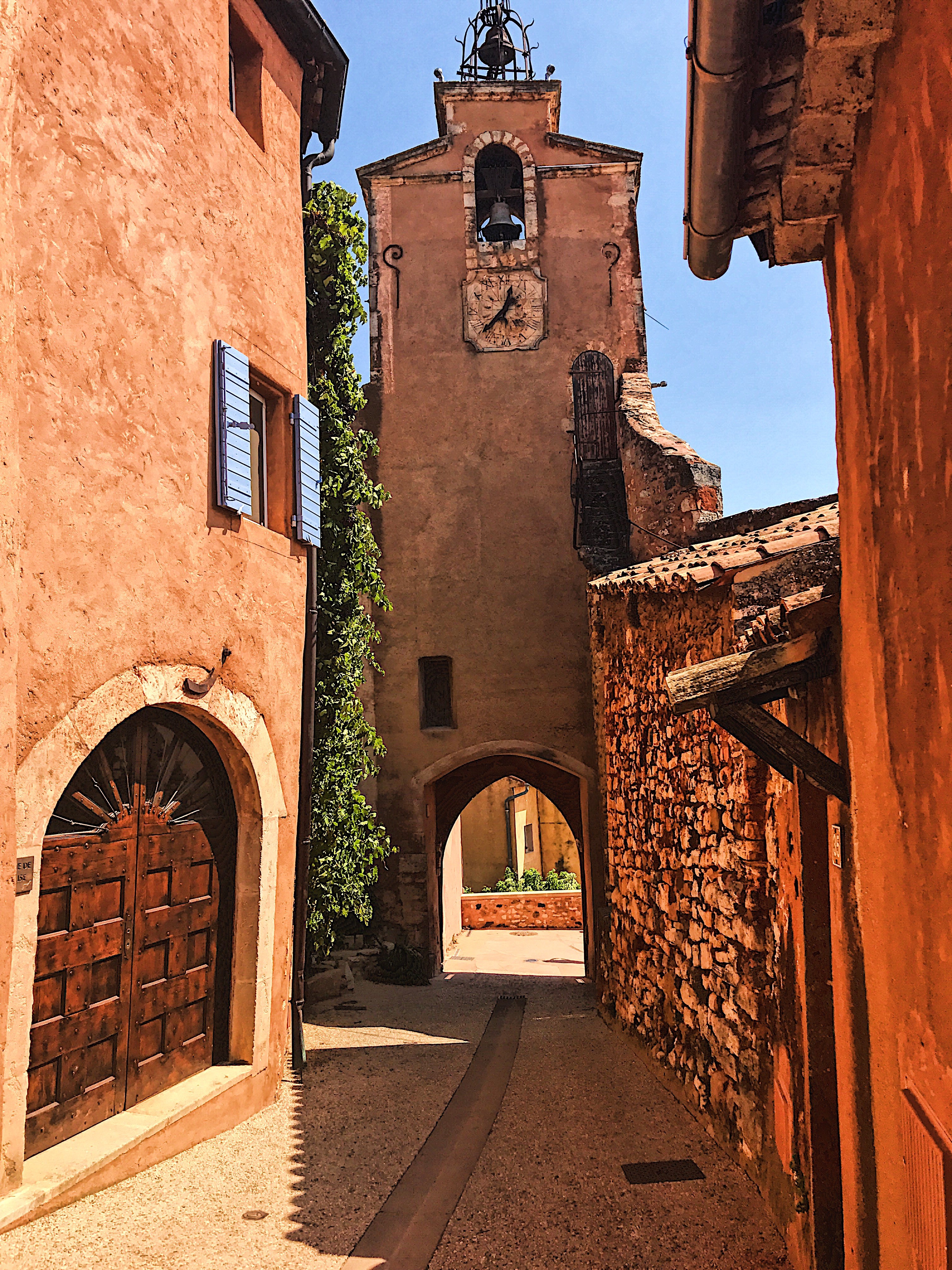
Source: thesavvybostonian.com

Source: thesavvybostonian.com
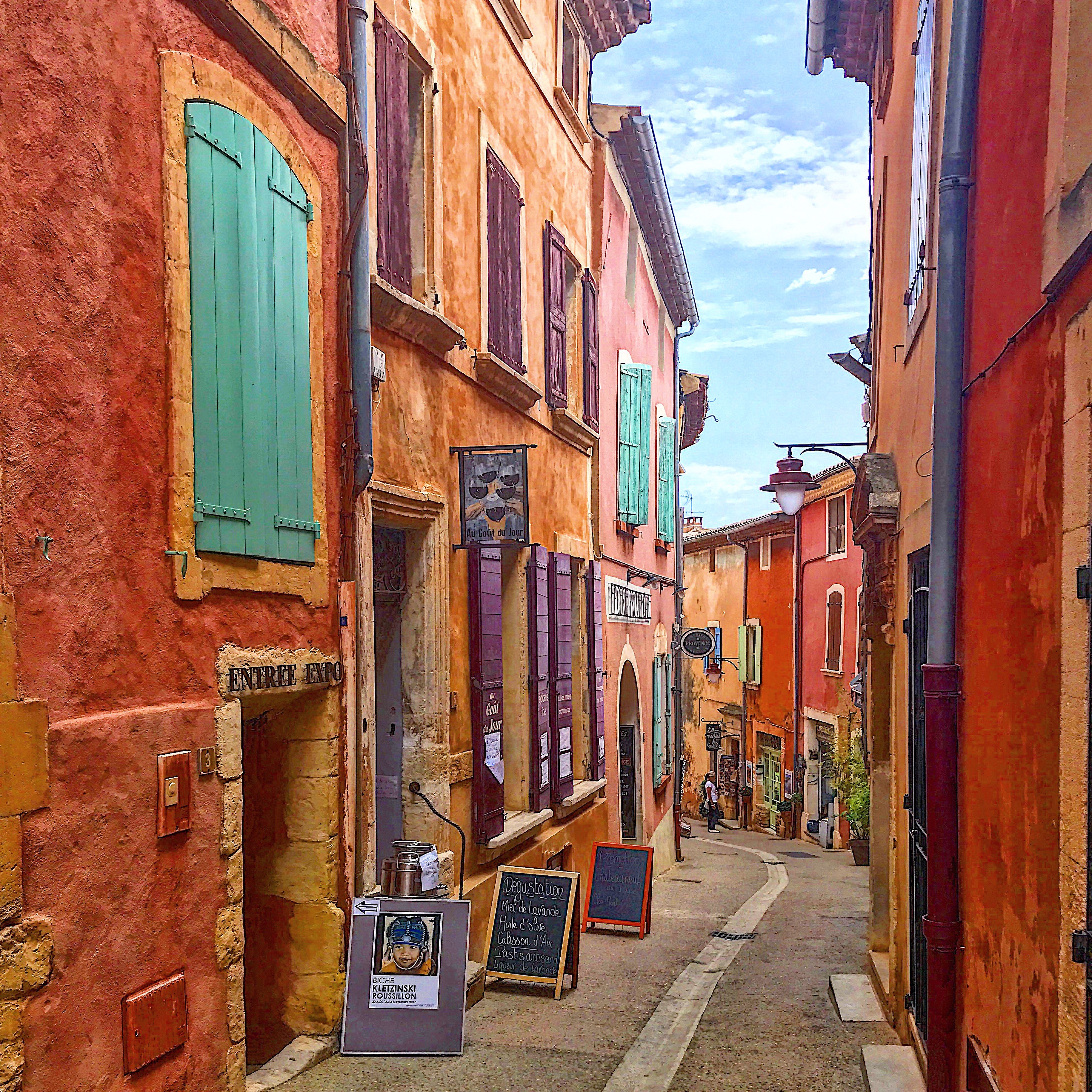
Source: thesavvybostonian.com
ALPES
Saint-Veran. Nestled high in the Hautes-Alpes overlooking a river valley at an altitude 5,700 to 10,400 feet, this is another LPBVdF. The église (dating from the 17th century) at the center of the village is 6,700 feet above sea level. It's a friendly ski resort in winter, and in summer it is perfect for walks and hikes through the beautiful landscape, but weather changes frequently, so check the forecast before heading out.
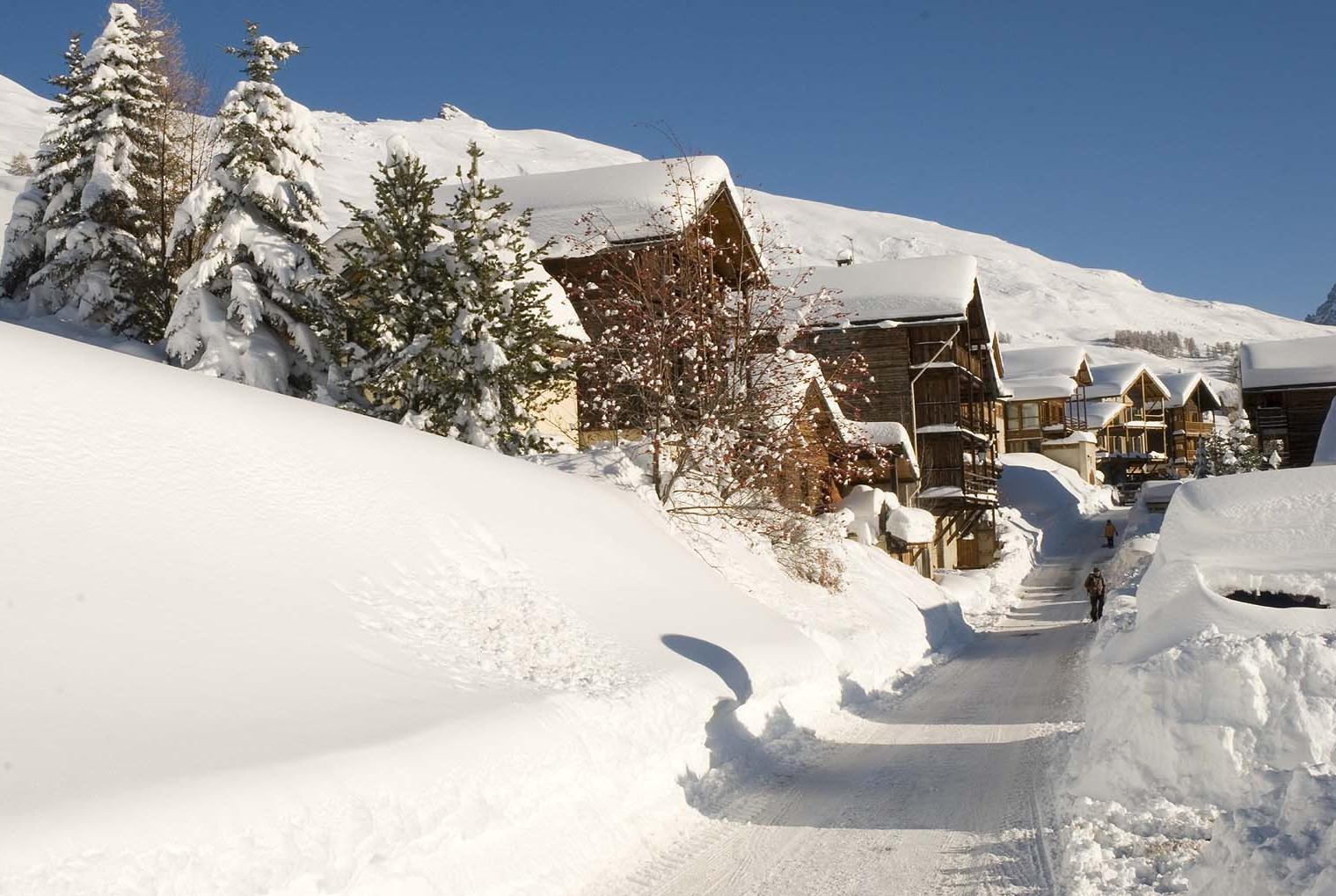
Source: onthesnow.com
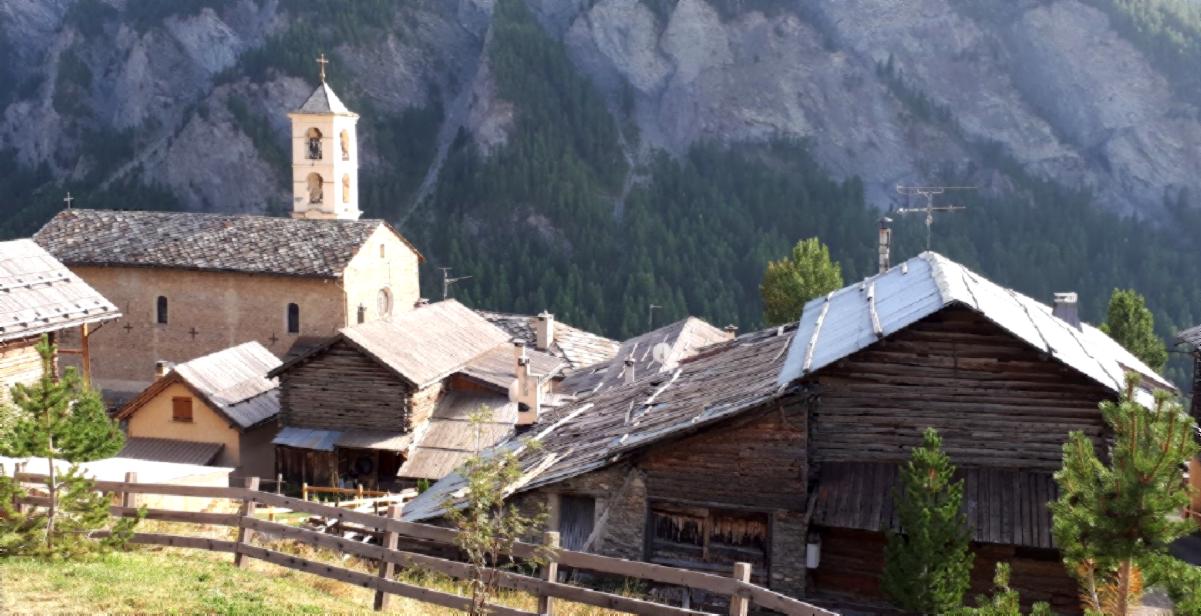
Source: Google Maps
Chamonix-Mont-Blanc. This swanky ski resort town at the base of Mont Blanc (the highest summit in the Alps) was the site of the 1924 Winter Olympics. You may find millionaires from Monte-Carlo or Luxembourg staying at its world-class hotels and taking on the slopes and après-ski. There's a Baroque village to enjoy with high-end boutiques and brasseries. For the view of a lifetime ride a gondola to Aiguille du Midi (20 minutes and a change of cable car), and lunch at the mountaintop restaurant, "Le 3842."
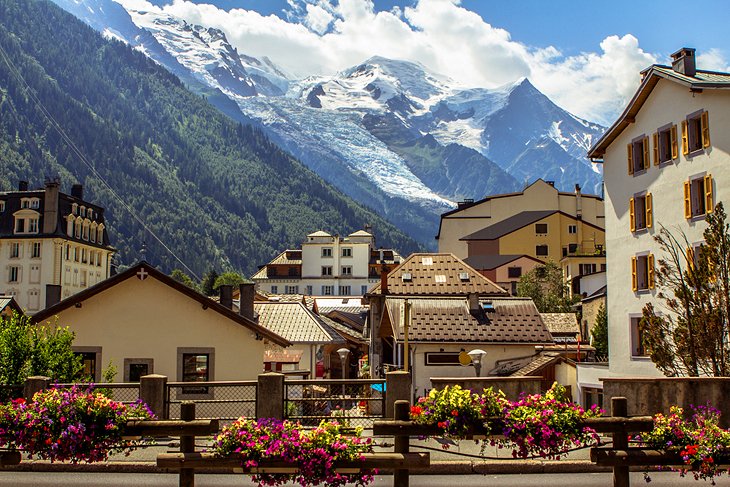
Source: planetware.com
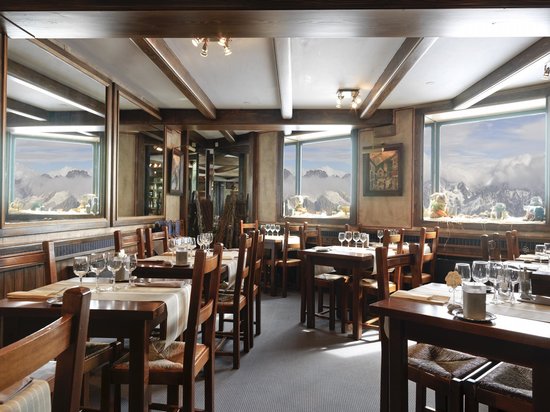
Restaurant Le 3842. Source: tripadvisor
PYRENEES
Cauterets. This is a town of some 900 inhabitants lying in a narrow valley, a hydromineral spa town and a winter sports resort. Pont d'Espagne in Cauterets is a national park and historic trading route in the valley with waterfalls and mountain ridges served by chairlift. A small French village, it is still loaded with grand and beautiful buildings encased in misty grey mountains and fragrant green pines.
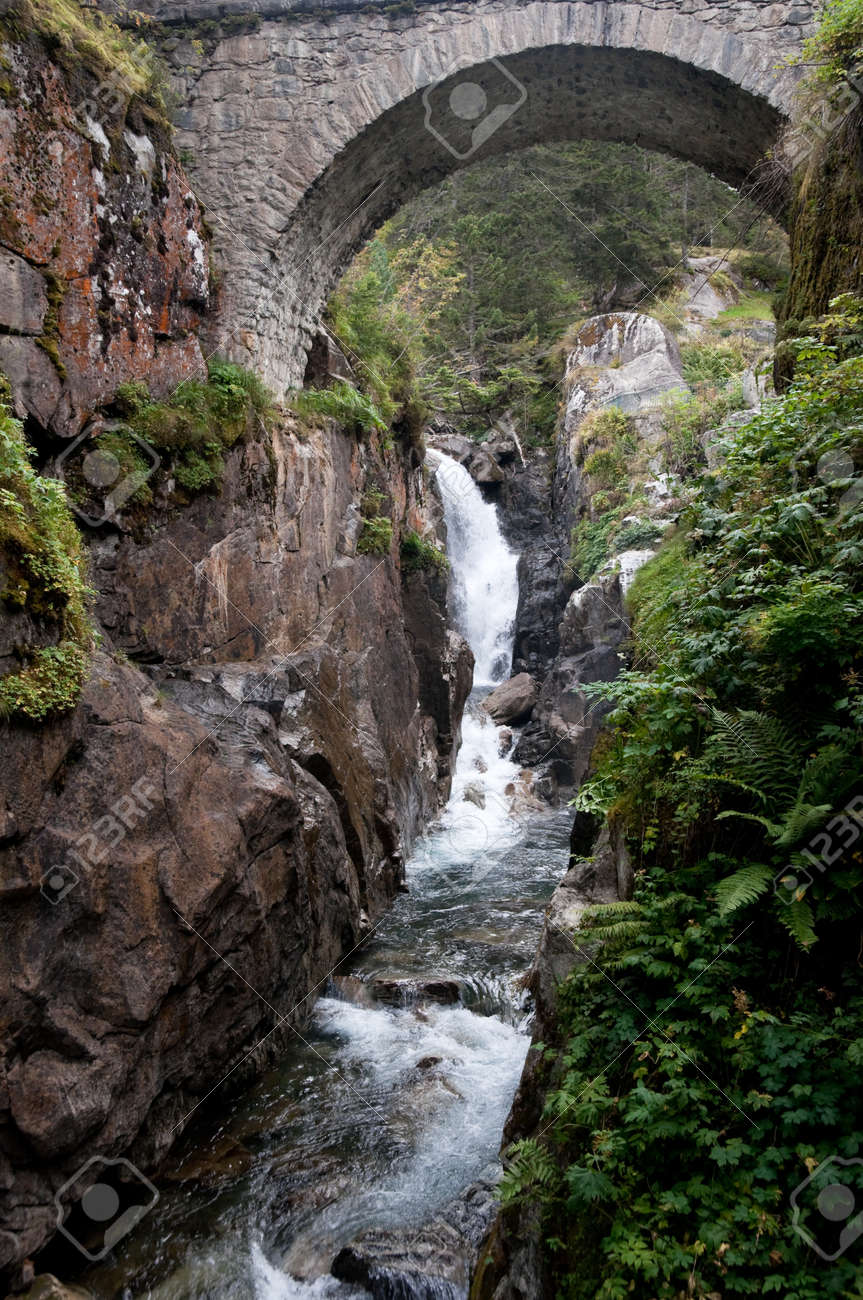
Source: 123rf.com
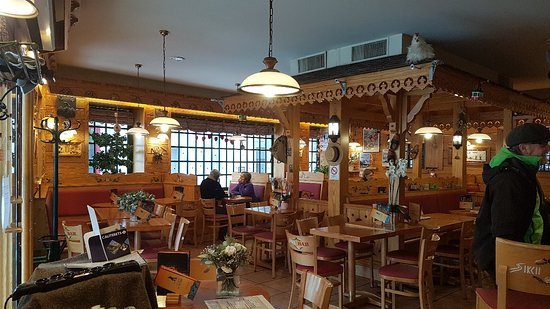
Cauterets Café ski bar. Source: tripadvisor
Ordino, Andorra (Spain). There are stone houses surrounded by jagged mountains, scenic hiking trails, cultural tours, and a museum, the Museo De La Miniatura De Ordino (5 euro entry fee). The Mirador del Roc del Quer has an observation deck is 6300 feet above sea level in the parish of Canillo with a spectacular scenic overlook with an amazing and breathtaking view. Ten best restaurants from
Things To Do
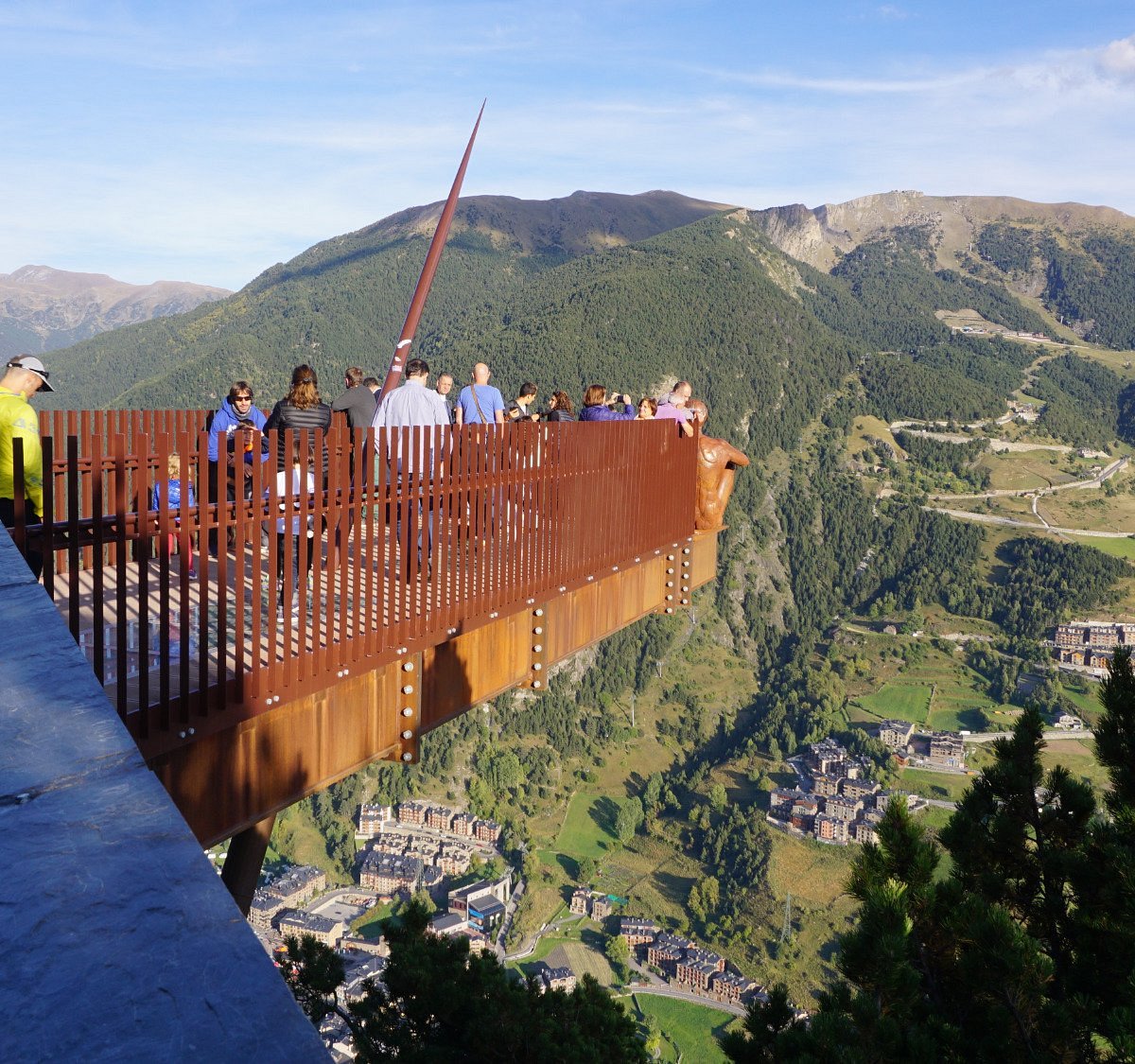
Source: theculturetrip.com

Source: tripadvisor
CORSICA
Corsica lies some 150 miles from mainland France and requires a ferry or airline to get there. The island is about 114 miles long; visit Porto-Vecchio on the south-east side, a beautiful harbor town. Short drives take you from white beaches to spectacular mountain scenery. Porto-Vecchio features historical Old Town loaded with restaurants, bars, boutiques, hotels and a marina where you'll find yachts, pleasure craft, and a few fishing boats.
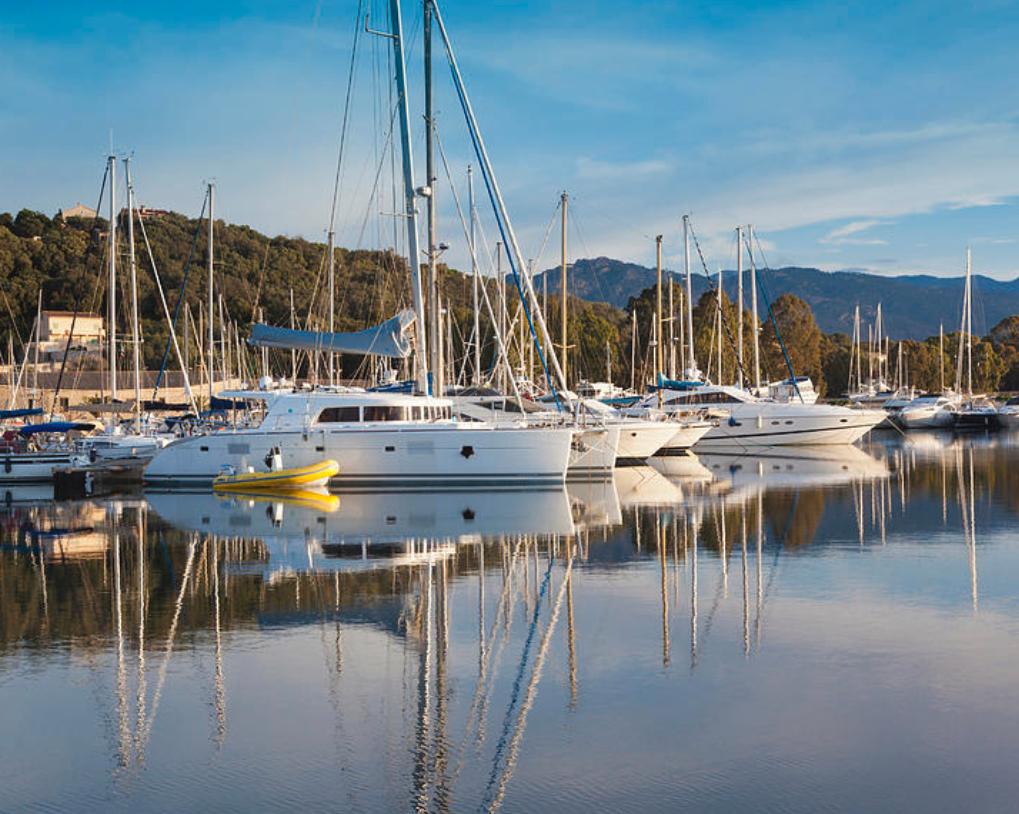
Source: fineartamerica.com
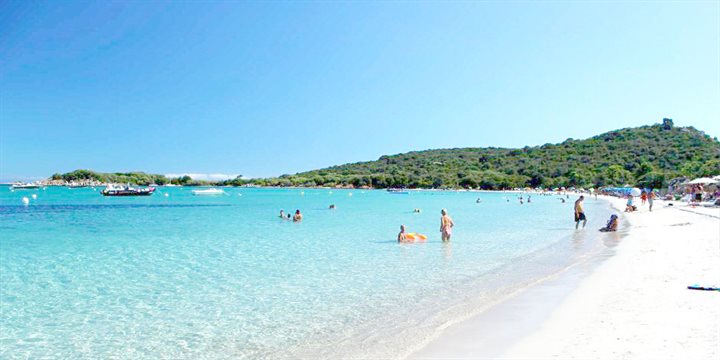
Source: serenity.co.uk
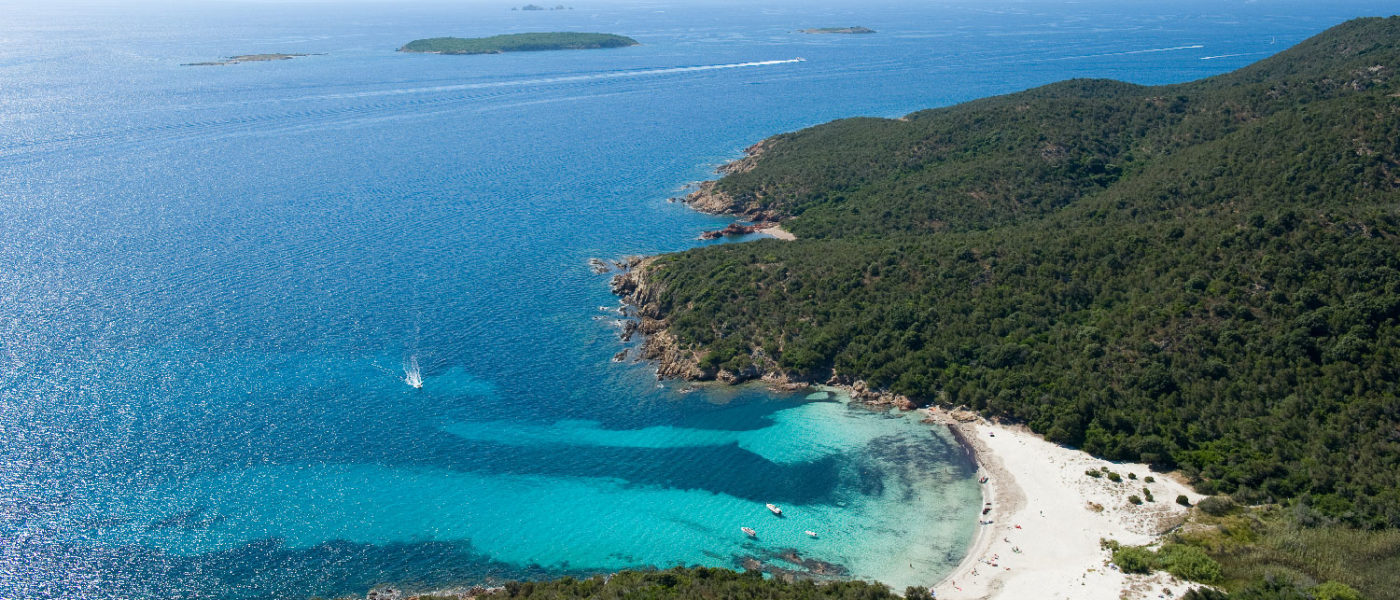
Source: residence-upirellu.com
Sant'Antonino is a hilltop village 1,500 feet above sea level on the north side, thus its nickname nid d'aigle (eagle's nest). Dating from the 9th century, it is one of the oldest towns in Corsica and one of LPBVdF. Wind through its narrow streets surrounded by rocky terrain and lovely stone houses that have been nicely restored; visit local craft shops, have some sustenance and refreshments in town. Or take a 12 minute drive to nearby Pigna for a meal, another charming hilltop destination with similar panoramic views of the landscape and coast.
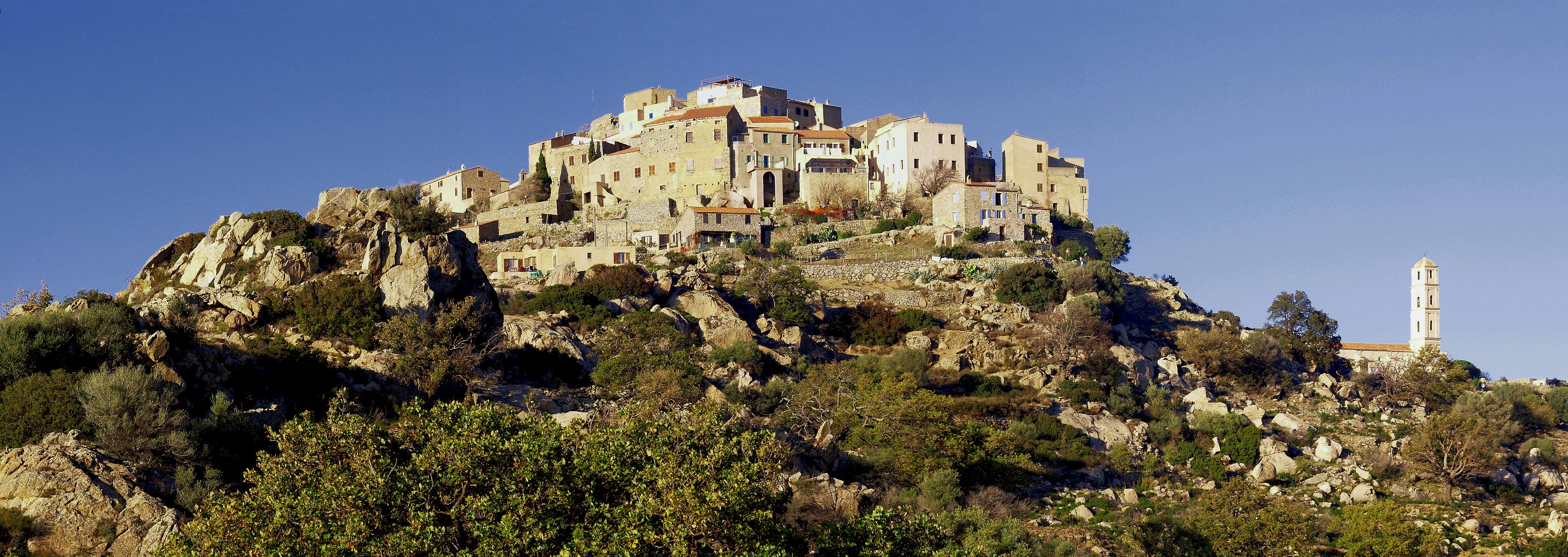
Source: Wiki Commons; author: Pierre Bona
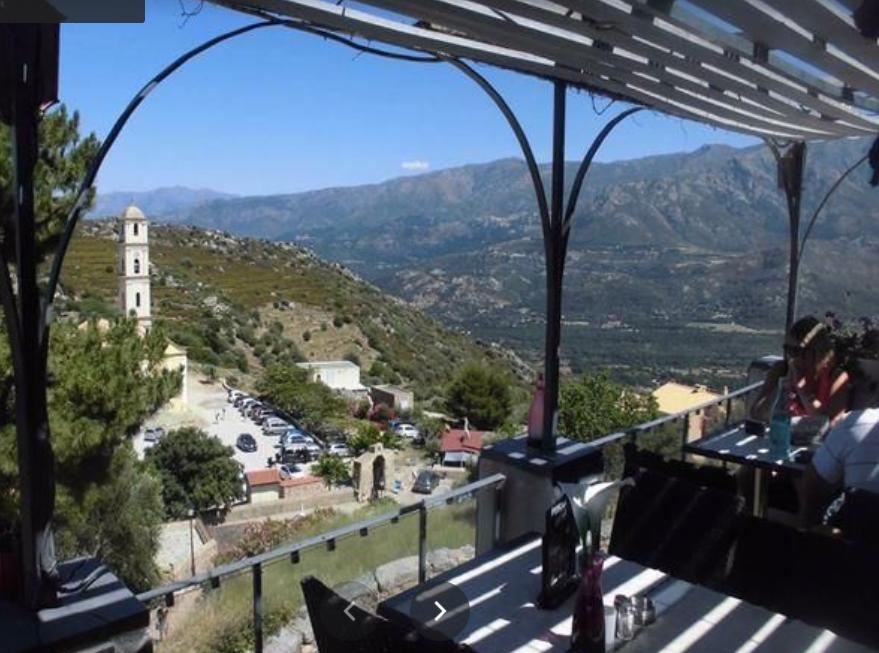
Source: Google Maps
Multi-City Auto Tours
DOUBS EXCURSION
Following the autoroutes D101 and D67 along the Loue River, in an hour's time you can visit half a dozen quaint, off the track hamlets, not found in typical vacation guides. This is an amazing little journey, in such a short distance to be able to cruise through and enjoy so many bucolic French riverfront villages that are almost lost in time. Make it a whole day if you want to tour some of the venues of interest.
Start at Quingey on the Loue, 20 km southwest of Besançon. The bridge over the river dates from 1590 and the town's history goes back to the third century. You'll find a number of restaurants in town, stop and have a drink and maybe a bite to eat. If you come on the first Monday of the month, enjoy their fair which starts at 7:30 and ends at 13:00. From Quingey to Chatillon-sur-Lison, our next destination, is a mere five minute drive.
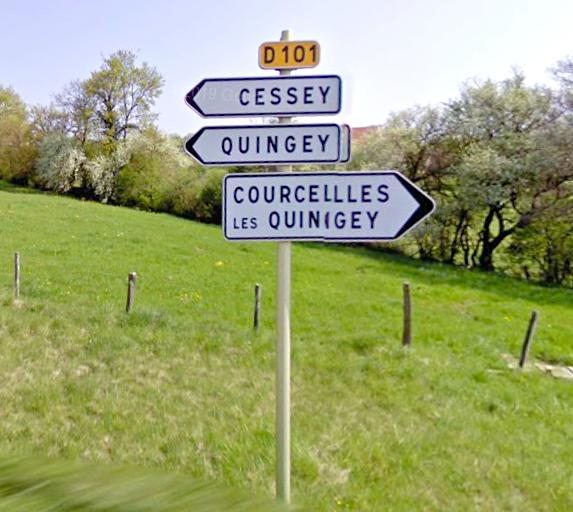
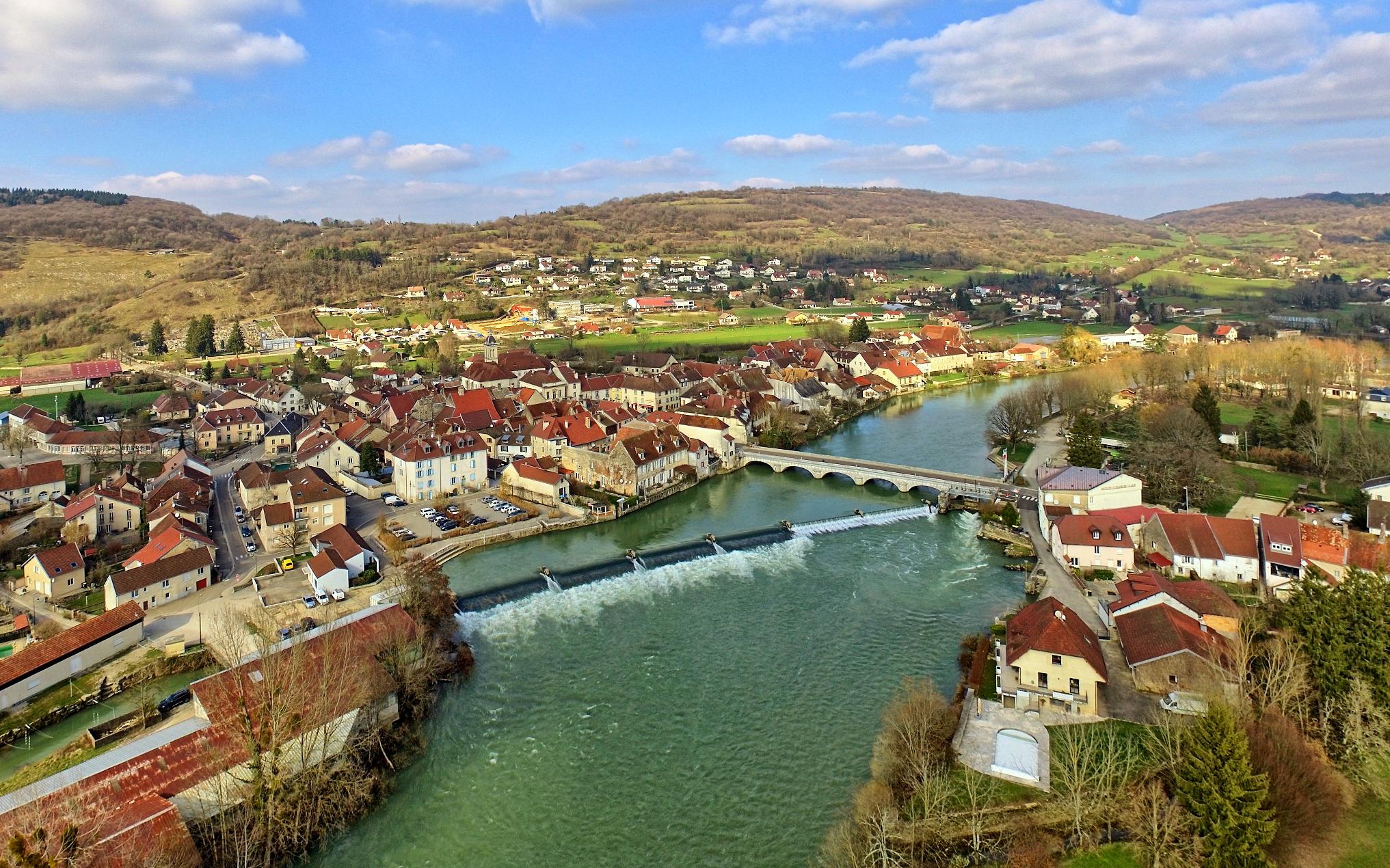
Par JGS25 -- Travail personnel, CC BY-SA 4.0, https://commons.wikimedia.org/w/index.php?curid=66703916
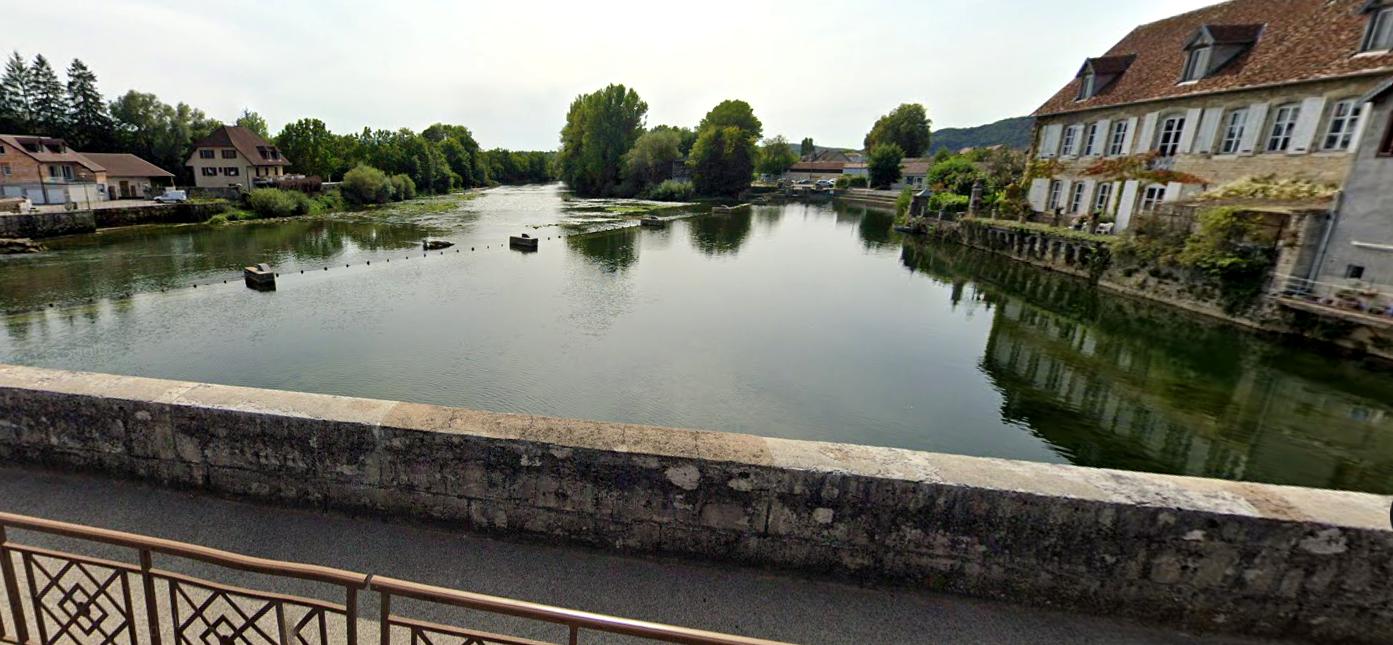
Source: Google Maps
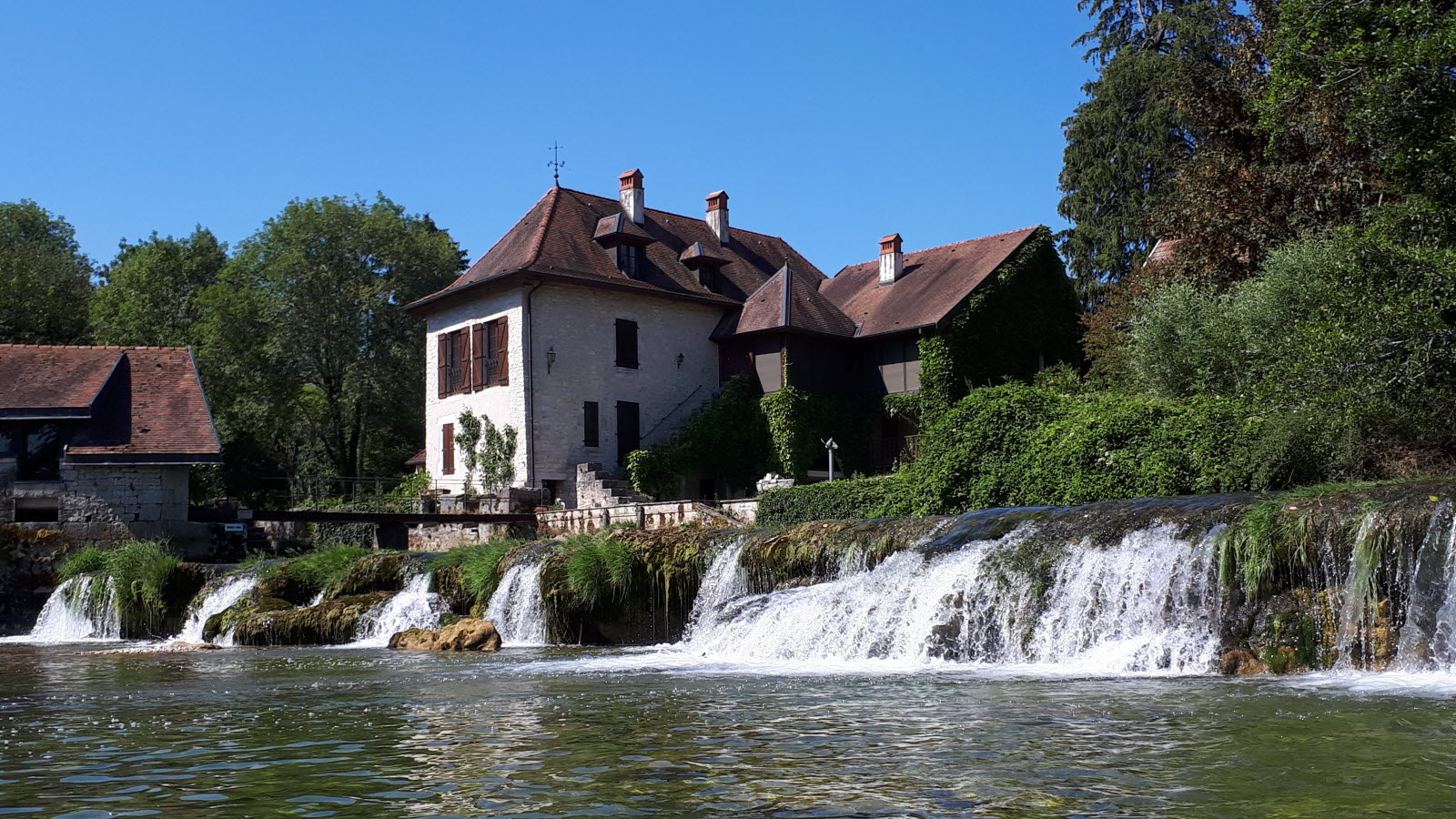
Source: estrepublicain.fr
Chatillon-sur-Lison offers a feudal castle dating from 12th century on a hill 460 meters above sea level, dominating the Loue and the Lison rivers. The village is made up of three hamlets: the Castle, the Granges, and the Forges. Nearby is a 10th century Castle of Scey in the town of Chassagne-Saint-Denis.
Another five minute drive takes you from Chatillon-sur-Lison to Cléron, a village of about 300 inhabitants right on the Loue river. Check out the town, visit the castle; perhaps experience the evolution of cheese making through the ages at the museum Hameau du Fromage, which has a shop and restaurant.
Cheese museum: Hameau du Fromage
Castle: Chateau de Cléron
Cléron:
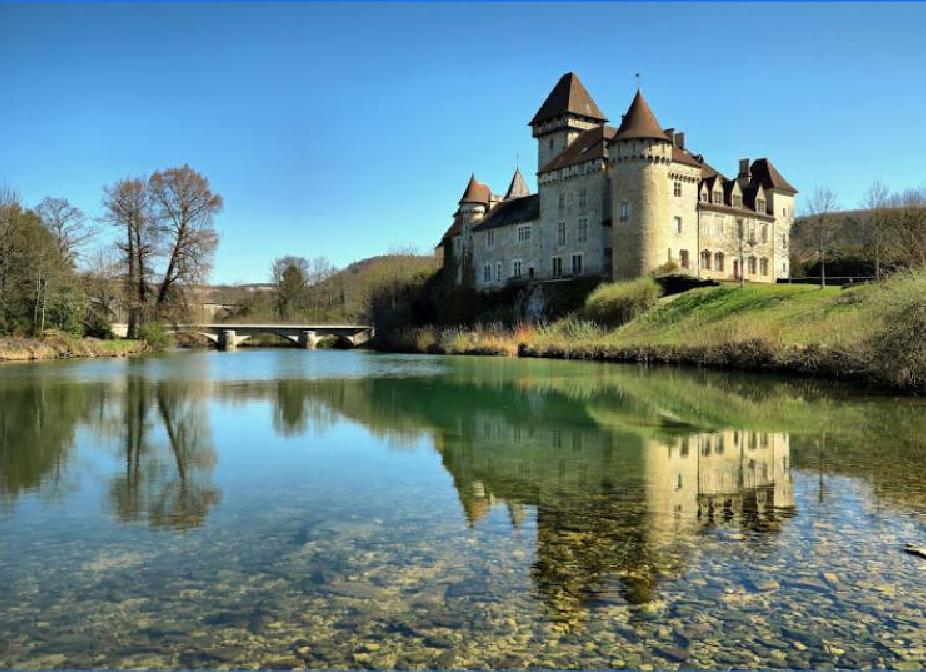
Source: Google Maps
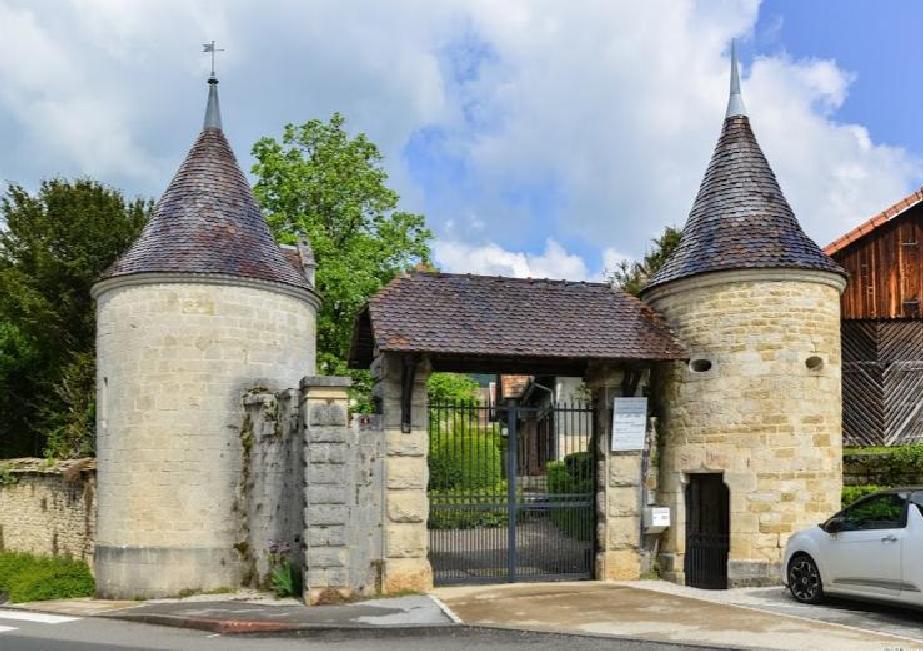
Source: Google Maps
Ornans. From Cléron to Ornans is five or six minutes by car where you can enjoy another riverside village, as it has been called "the Venice of France-Comté" (a bit of an exaggeration) with beautiful old houses along the River Loue and flowers everywhere in the summer. Consider a visit to the Courbet museum in the birth house of Gustave Courbet, which holds numerous works by the famous artist. However long you spend here, the trip to our next village is only a two minute drive.
Montgesoye is just a tiny little town with about 500 people and not much to do except appreciate how beautiful it is as you drive or stroll around taking in its rural treasures. We had lunch at restaurant La Fountaine (13 rue de Besançon); very friendly people and a pleasant interlude. Reviews from
Trip Advisor
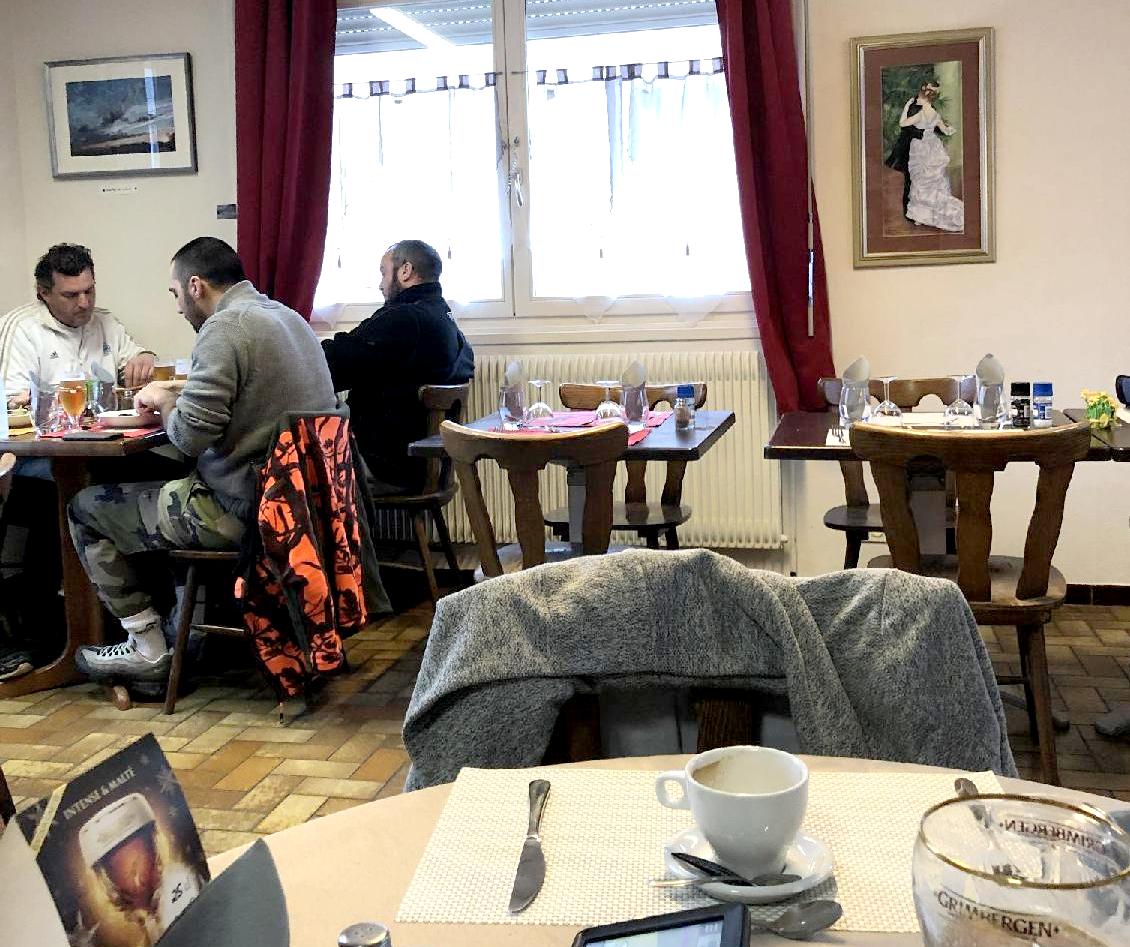
La Fountaine, Photo taken by M. Burk December 2019
Vuillafans lies a minute's drive from Montgesoye with satisfying views from either of its two bridges over the river. And finally you'll want to drive 2 more minutes to Lods...
Lods is the tasty dessert for this daytrip, its pretty shallow waterfalls providing you with your final eye candy, and a riverside picnic ground at 1 Chemin des Forges. At your discretion you may use the municipal camping facility by the river, or stay at one of its hotels.
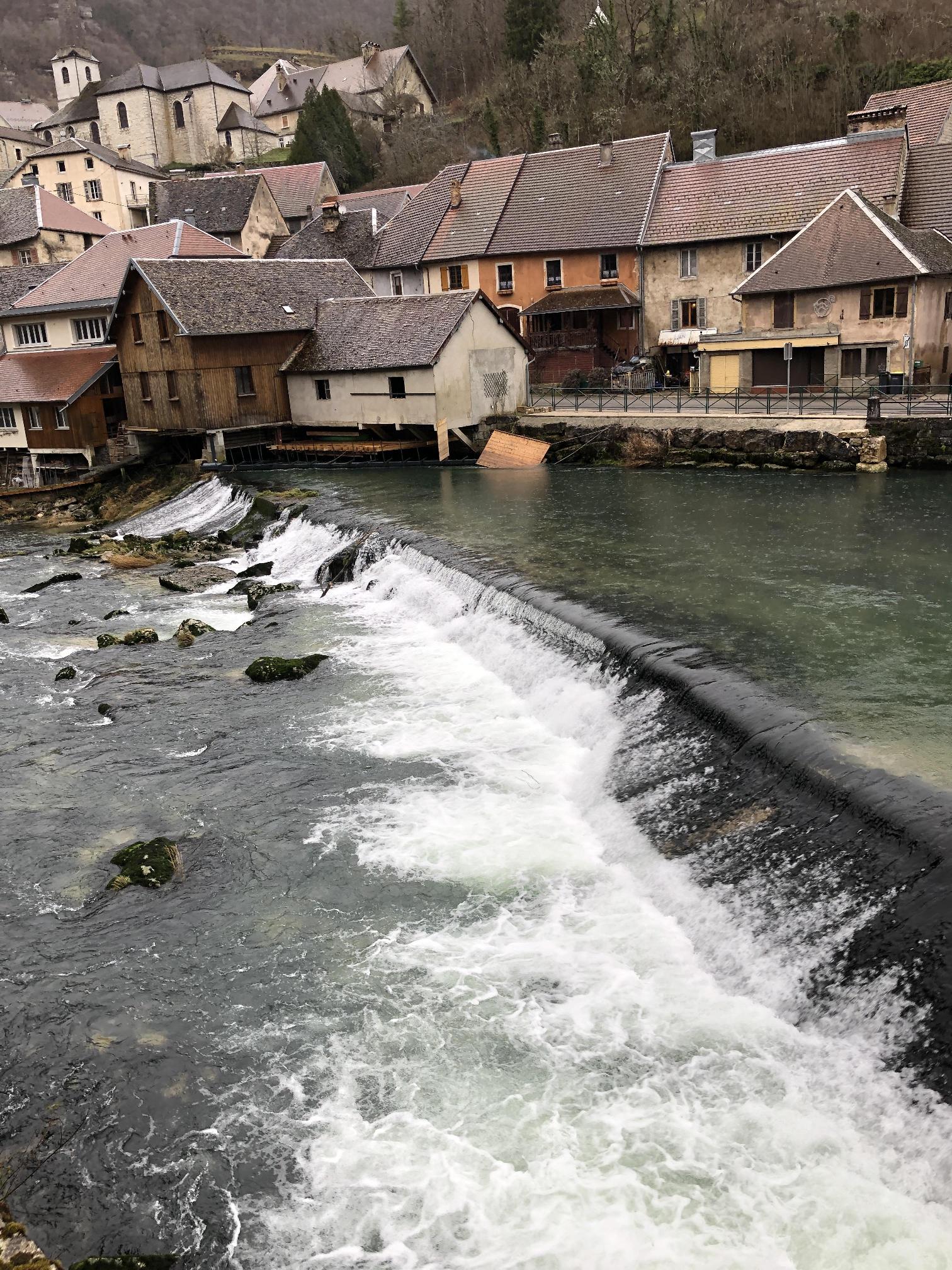
Lods: Photo taken by M. Burk December 2019
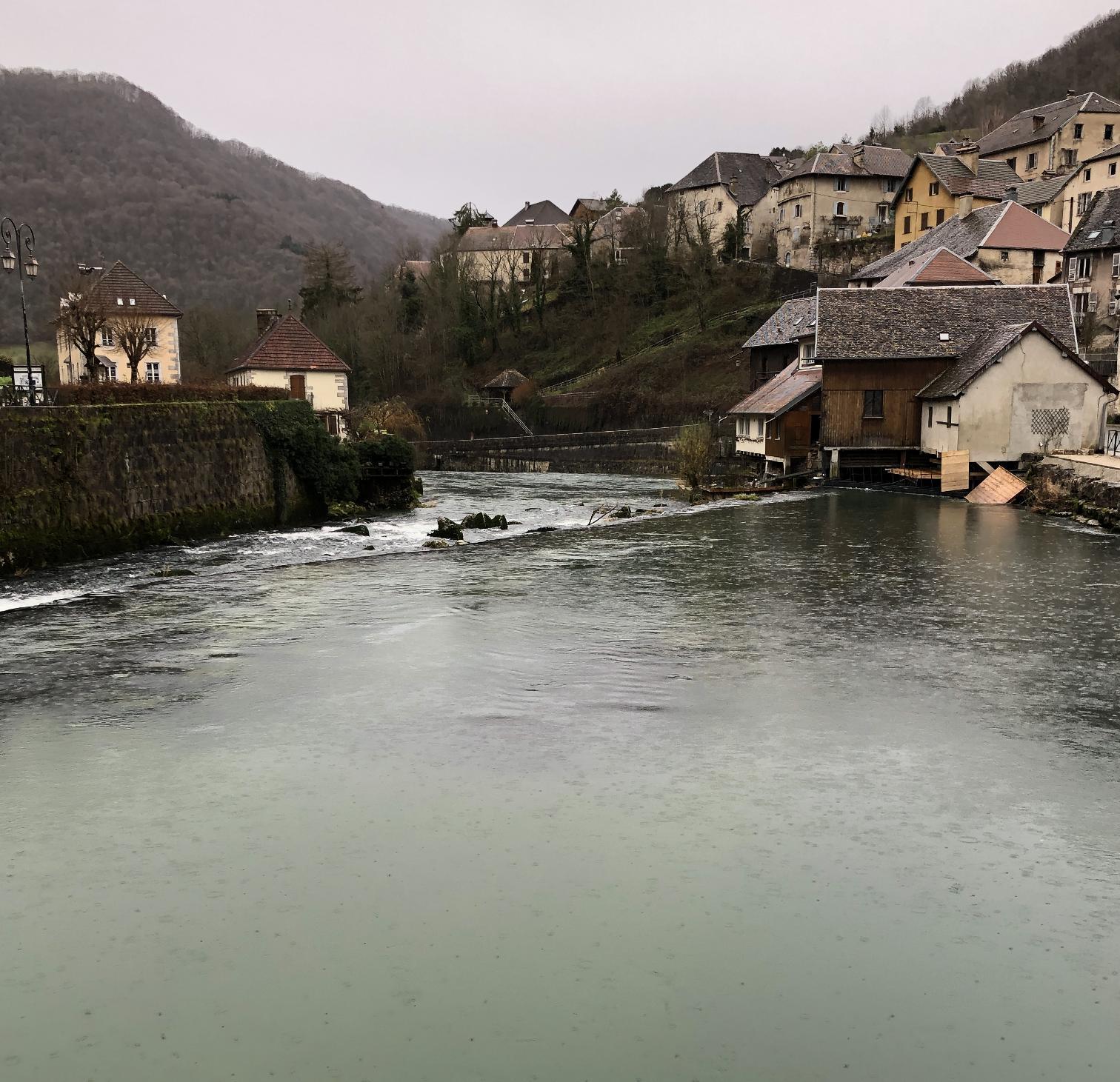
Lods: Photo taken by M. Burk December 2019
CÔTE D'AZUR EXCURSION: Èze, Villefranche-sur-mer, Cap d'Ail, Monaco.
While it's just a 6 km trip from central Èze to the beaches at Villefranche-sur-mer (both were described above), these towns on the coast are too beautiful to just zip through. The best plan would be to book a hotel in one of them for several days or a week, and plan a couple day trips to others nearby.
Cap d'Ail is 8 km from Èze, with some 5,000 inhabitants in its 2 square km of land. There are beautiful beaches, pleasant restaurants and shops, and heavenly views set between sky and sea.
It's just a 2 to 3 km trip from Cap d'Ail to Monaco. At 499 acres, Monaco is the second smallest country in the world after Vatican City. It has a population of around 40,000, of which 12,000 are millionaires.

Source: tripadvisor

Source: tripadvisor
Another 4-5 km and you're at the casinos in Monte-Carlo. You can visit the Palais du Prince, which stands high above Monaco, dating from the 13th century. Visits are available when the Prince is not home; just look for the flag in the main tower, and if it's raised the prince is there. (If he is home, consider ringing the doorbell and running away. Put the video on YouTube.) Another choice is the Casino de Monte Carlo, one of the most famous in the world.
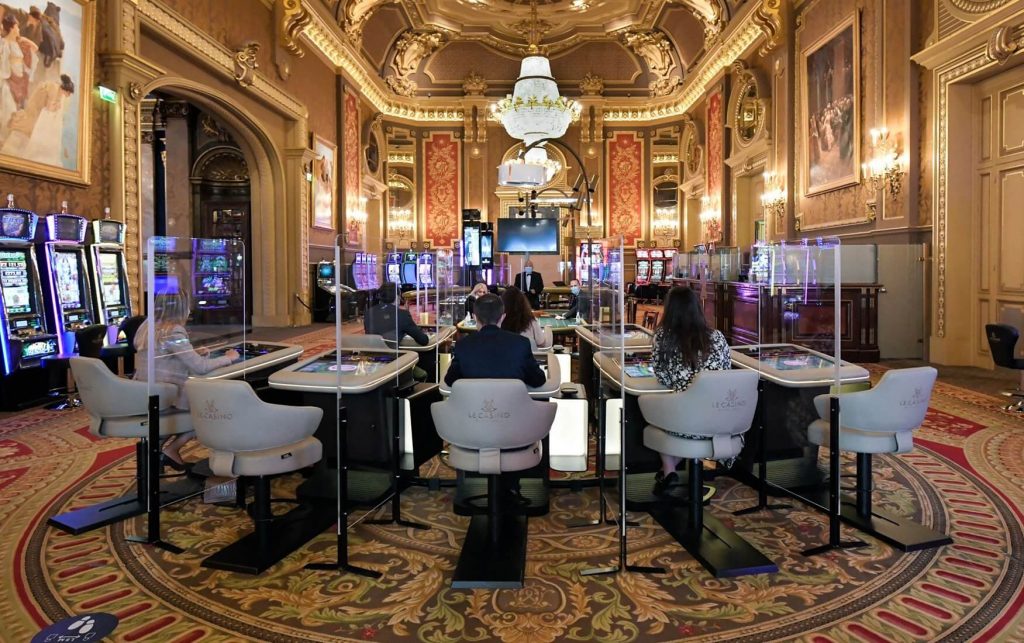
Photo courtesy Monaco Tribune
One of the oldest aquariums in the world is in Monaco, the Musée Oceanographique. There are also three others, the Mediterranean Aquarium, a Tropical Aquarium, and a Shark Lagoon.

Musée Oceanographique photo from viator
HOME






















:max_bytes(150000):strip_icc():format(webp)/strasbourg-and-her-beauty-916501254-ce71f410ac7c49038051063de7c12d86.jpg)












































